This State Has the Worst Traffic in the U.S., According to Data
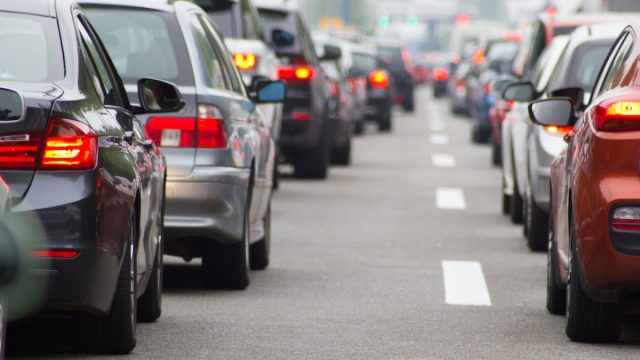
Is there anything worse than getting stuck in traffic when you’re rushing to get somewhere? Of course, a traffic jam can happen anywhere, but anyone who has spent enough time on the road knows that some cities and states have it much worse than others. To find out where traffic is usually totally valid and not just an excuse for being late, Best Life consulted a 2021 report from TRIP, a nonprofit that researches transportation trends and needs, to determine which state has the worst traffic in the U.S.
In conjunction with the 65th birthday of America’s interstate highway system, TRIP released a report that analyzed data to determine what percentage of each state’s interstate system is congested with traffic. Using data primarily prepared for Congress by the Transportation Research Board, TRIP also identified, amongst other things, the condition the country’s highways and bridges are in. Read on to discover which state with the worst traffic and to learn more about the ways of the road.
RELATED: This State Has the Deadliest Drivers in the U.S., According to Data.
50
Alaska

Congested interstates: 0 percent
Alaska has the opposite of a traffic problem, according to the TRIP report, with 0 percent of the state’s interstate system considered congested.
However, that doesn’t mean its roads are in perfect condition: 8 percent of Alaska’s interstate pavement is in poor condition, the report found.
49
Montana
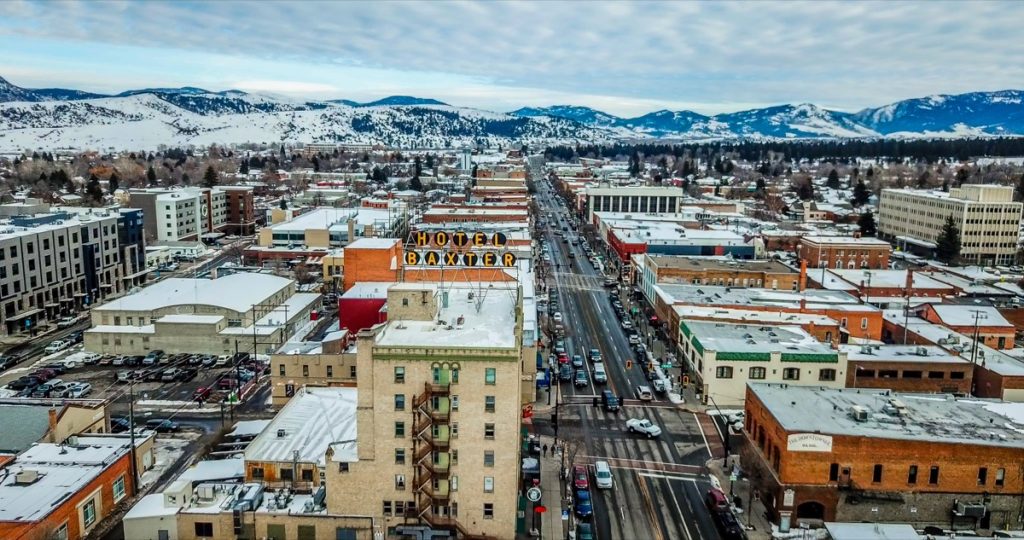
Congested interstates: 0 percent
Like Alaska, 0 percent of Montana’s interstate system is considered congested. The state has, however, seen a 34 percent increase in vehicle miles traveled on those roads since 2000, but even with that being the case, only 1 percent of them are considered to be in poor condition.
RELATED: This is the Deadliest Highway in Your State, Data Shows.
48
South Dakota
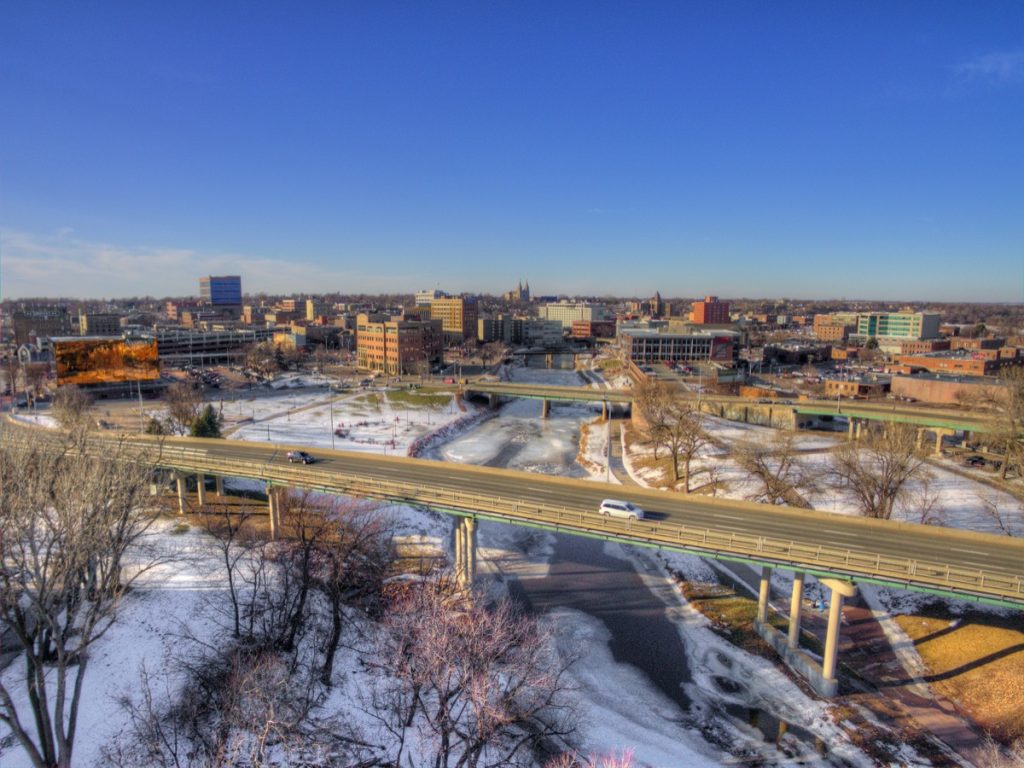
Congested interstates: 0 percent
South Dakota joins Alaska, Montana, and two other states on this list as being one of the only five states in the country that has 0 percent interstate congestion. Not only that, but 0 percent of South Dakota’s interstate bridges are considered to be in poor condition, despite more than half of them being 50 years old or older.
47
Vermont
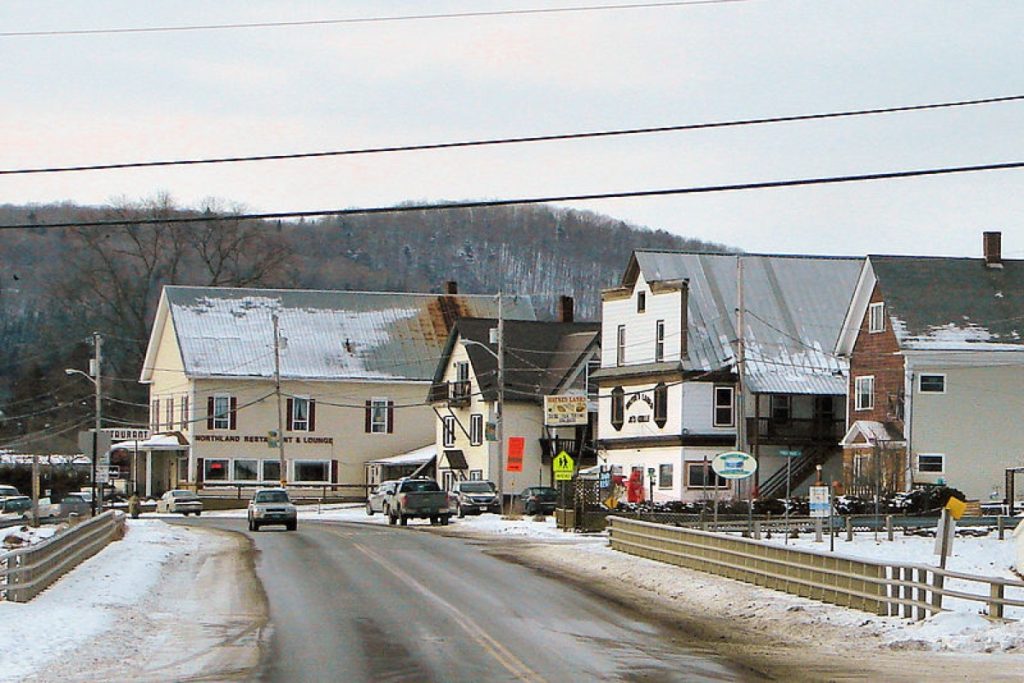
Congested interstates: 0 percent
Vermont is the second-to-last state whose interstates are congestion free. However, the state has seen a 16 percent increase in vehicle miles traveled on its highway system since 2000. Still, 54 percent of its bridges are in fair condition and only 1 percent of them have pavement that’s considered to be in poor condition.
46
Wyoming
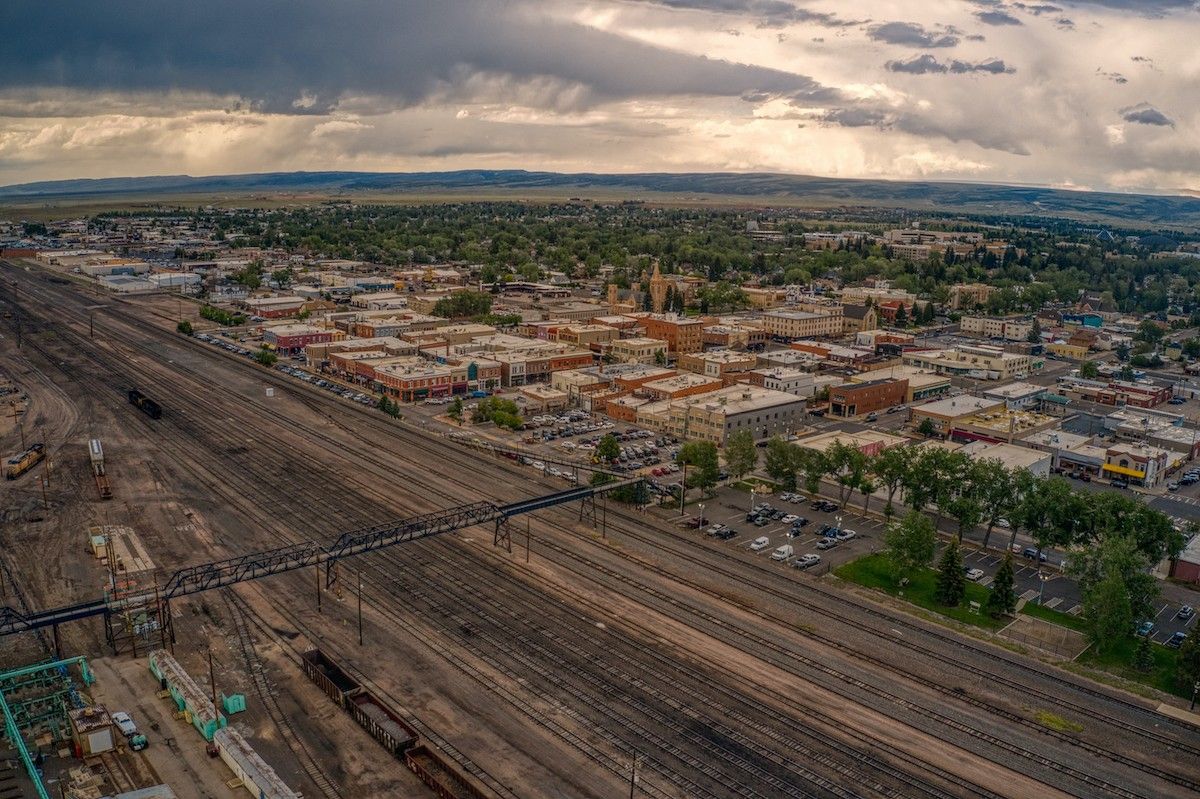
Congested interstates: 0 percent
Wyoming is the last of the five states in the country that have 0 percent congestion on their interstates. And despite the fact that three-quarters of the state’s interstate bridges are at least 50 years, 76 percent of them are considered to still be in fair condition.
45
West Virginia
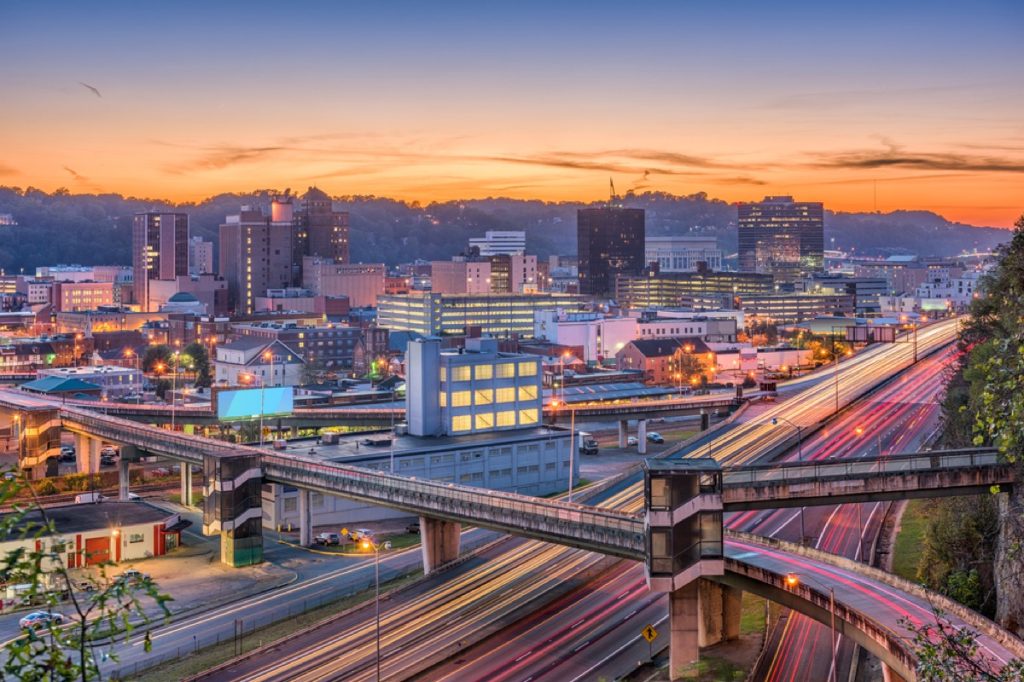
Congested interstates: 6 percent
While 6 percent congestion is way below the national average of 47 percent, West Virginia does have some other issues on its roads: 3 percent of its highways have pavement in poor condition and the same could be said of 13 percent of its bridges.
44
North Dakota
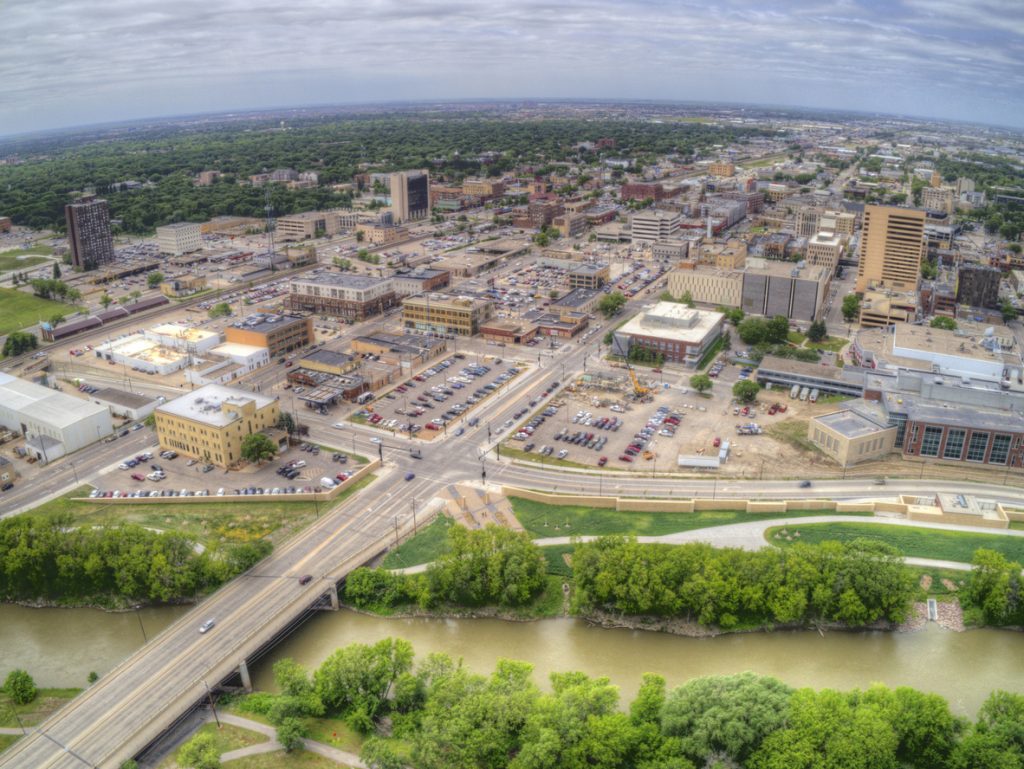
Congested interstates: 8 percent
North Dakota has seen a 41 percent increase in vehicle miles traveled since 2000, but it fared slightly better than West Virginia in terms of the state of its highways and bridges: 2 percent of the former are in poor condition as are 3 percent of the latter.
43
Maine
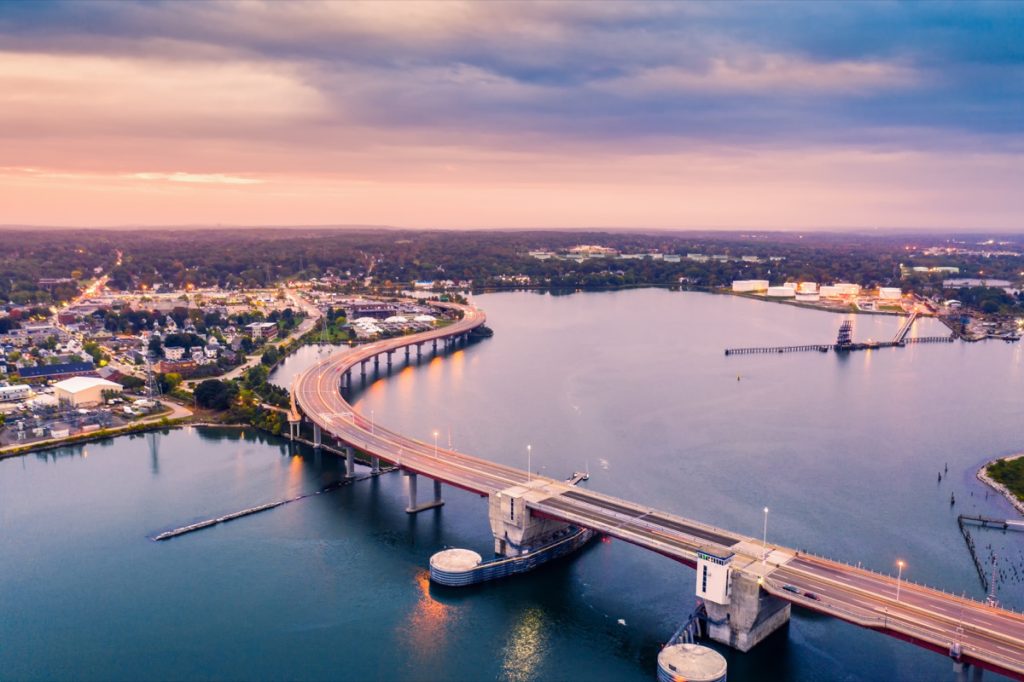
Congested interstates: 9 percent
Maine may have a congestion rate significantly less than the national average of 47 percent, but 5 percent of its bridges are considered in poor condition, which is above the national average of 3 percent.
42
Mississippi
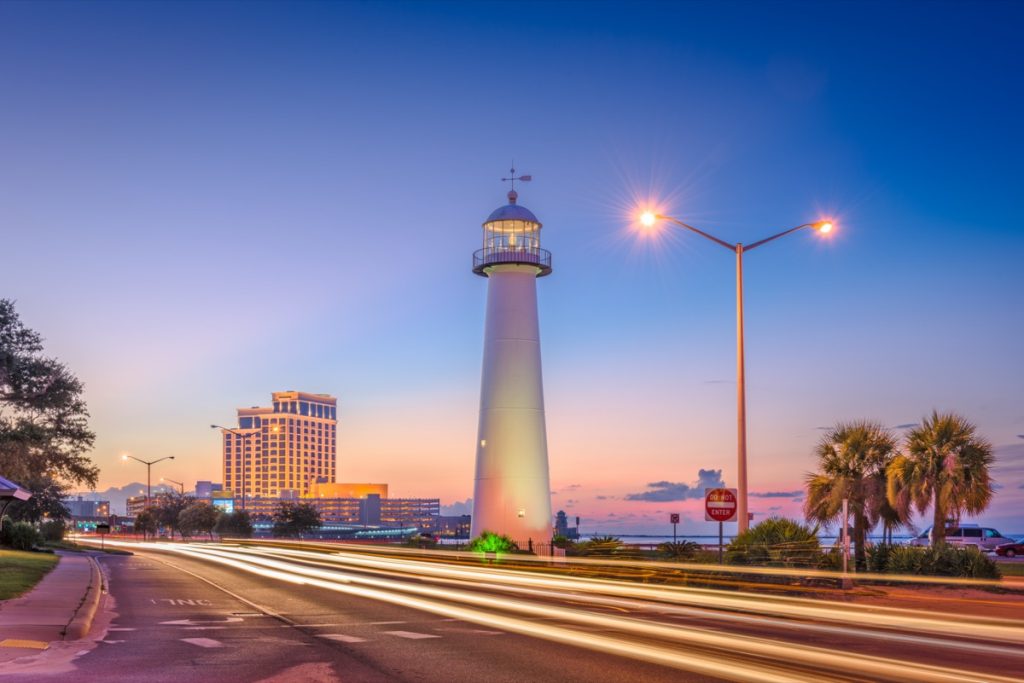
Congested interstates: 15 percent
Mississippi’s traffic isn’t terrible, with just 15 percent of the state’s highways considered congested. Plus, half of Mississippi’s bridges are in fair condition, although 61 percent being at least 50 years old.
41
New Mexico
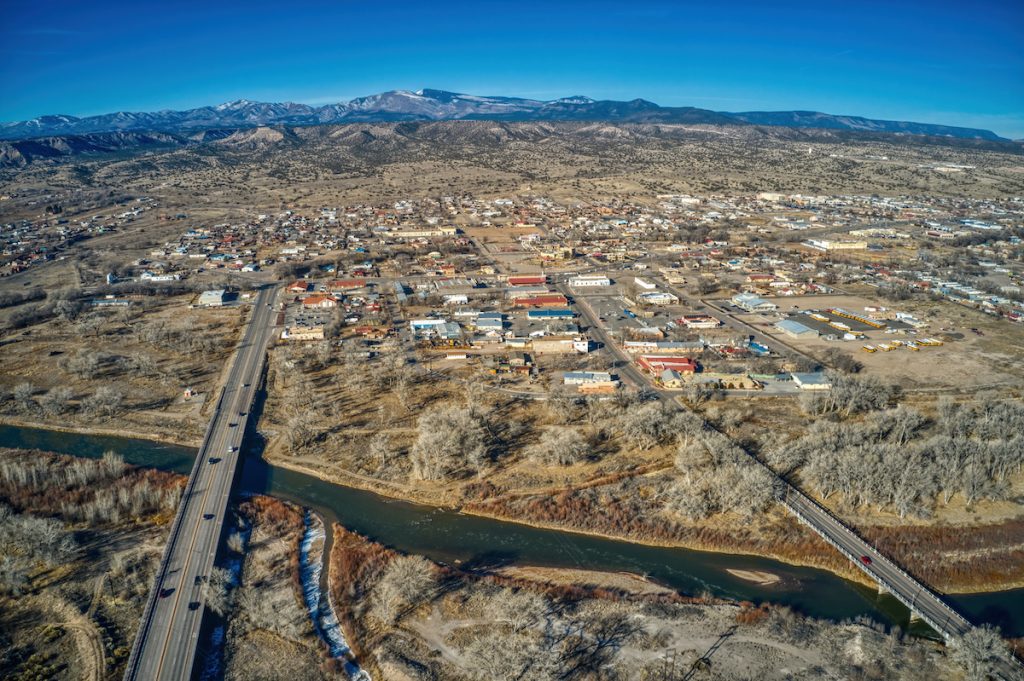
Congested interstates: 19 percent
New Mexico’s highways aren’t looking so bad with only 19 percent having traffic congestion and few of its interstate roads (2 percent) and bridges (3 percent) being in poor condition.
40
Iowa
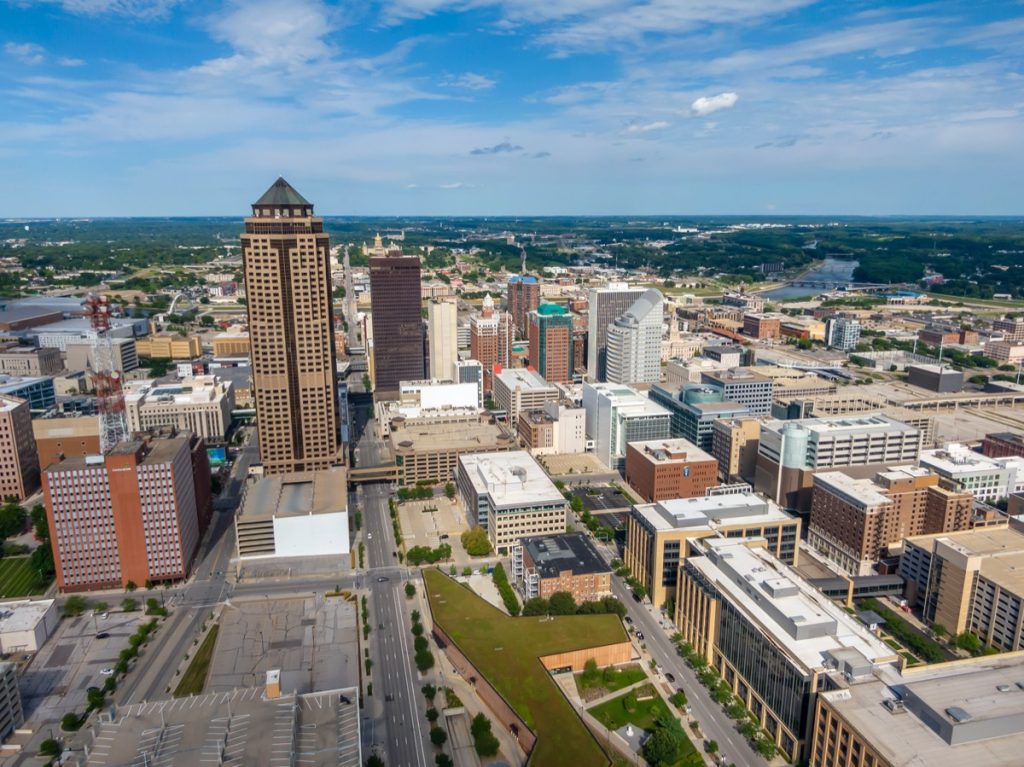
Congested interstates: 21 percent
Iowa is a bit less congested than many other Midwestern states, and very few of its highways and bridges are in poor condition—its numbers are even better than New Mexico’s with 2 percent and 1 percent, respectively.
39
Idaho
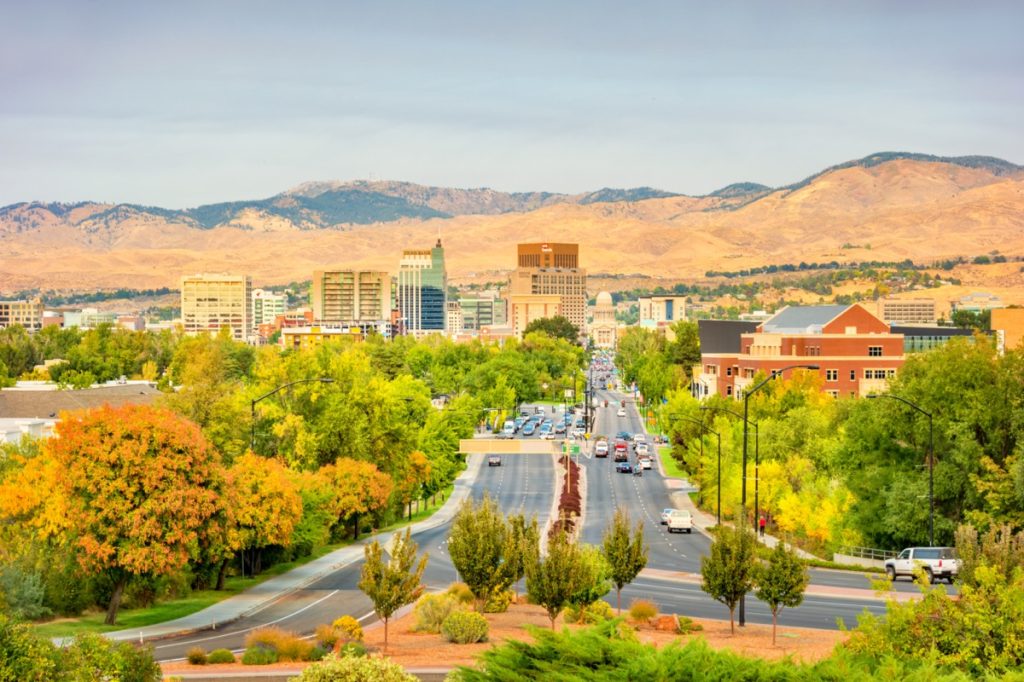
Congested interstates: 24 percent
Nearly a quarter of Idaho’s highways are congested, which makes sense seeing as the state has seen a significant increase in the use of its interstate system over the last couple of decades. Since 2000, there has been a 44 percent increase in vehicle miles traveled, which is well above the national average of 26 percent. But even with that increased wear and tear, only 1 percent of the pavement is considered to be in poor condition.
38
Kansas

Congested interstates: 24 percent
Just like Idaho, about one in four interstates in Kansas is congested, but the good news is that 0 percent of its bridges are considered to be in poor condition.
37
Pennsylvania
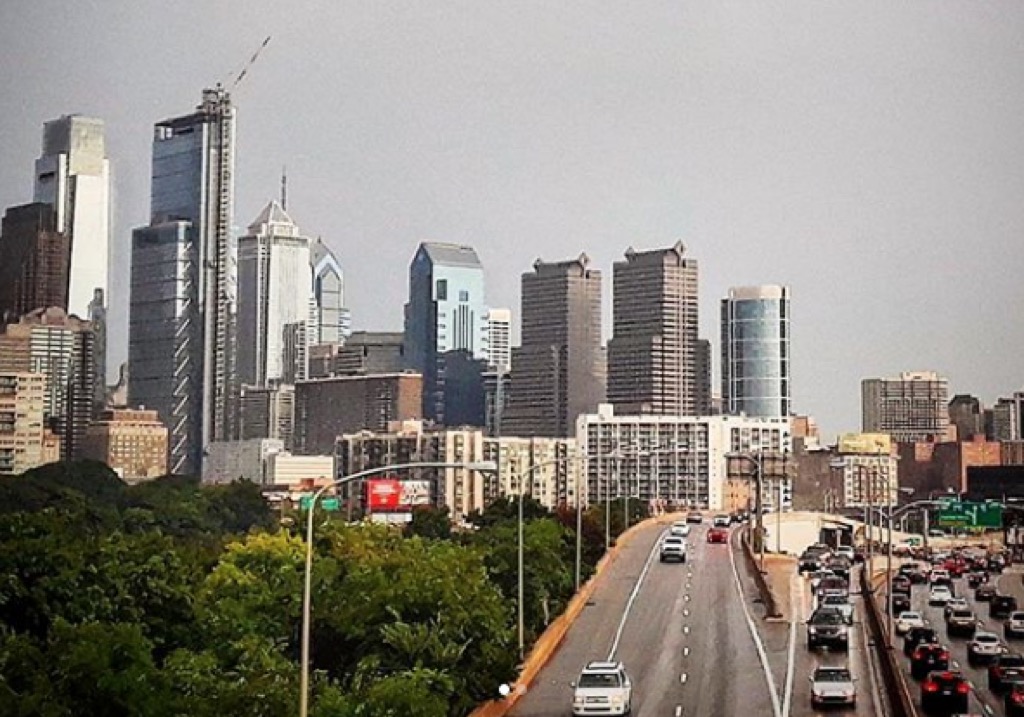
Congested interstates: 27 percent
Pennsylvania has seen a 22 percent increase in vehicle miles traveled since 2000, which, like its 27 percent congestion rate, is below the national average.
36
Alabama
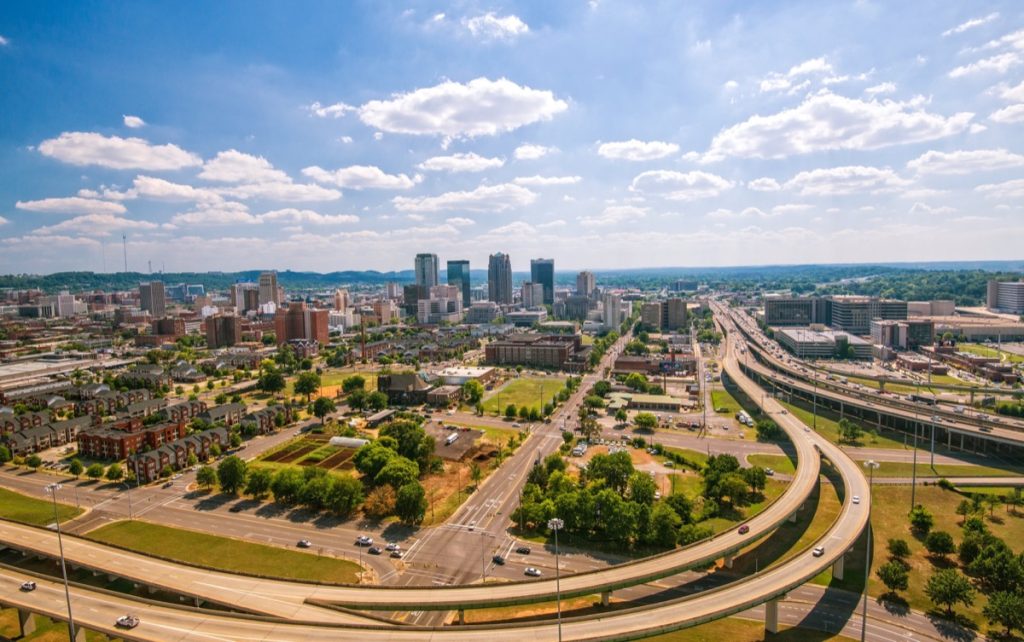
Congested interstates: 29 percent
Nearly a third of Alabama’s highways are traffic-prone, and the roads themselves are slightly worse for the wear—4 percent are in poor condition, compared to the national average of 3 percent.
35
Indiana
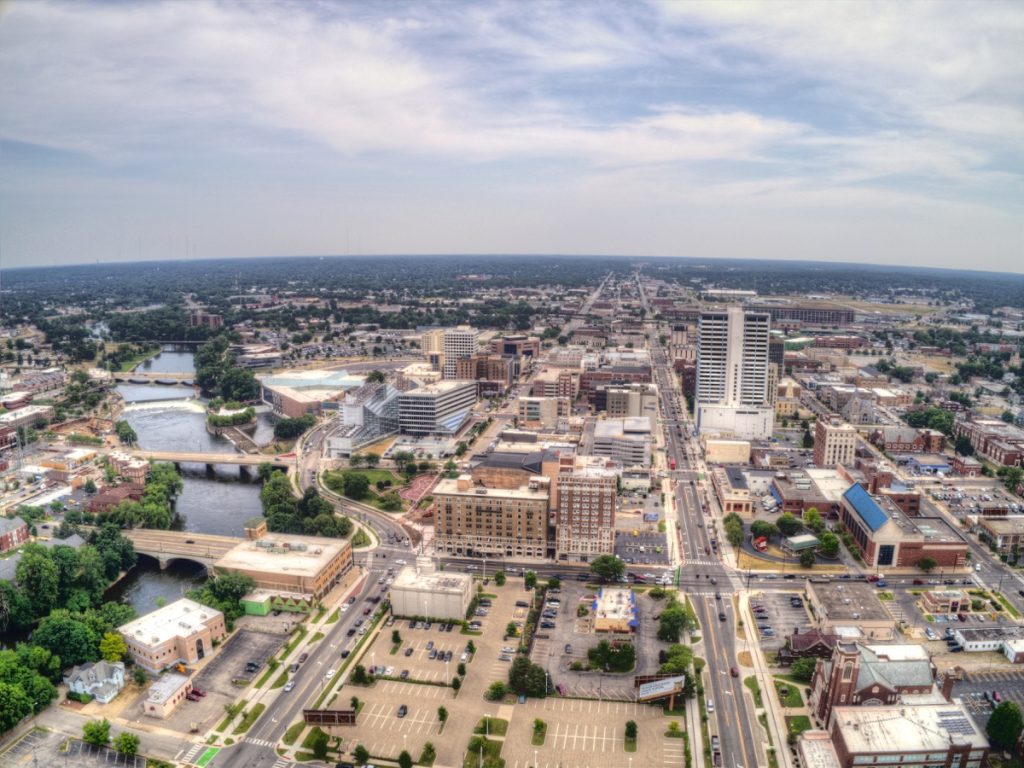
Congested interstates: 29 percent
Indiana has the same congestion rate as Alabama, though it does a slightly higher rate of highways in poor condition, at 5 percent.
34
Arkansas
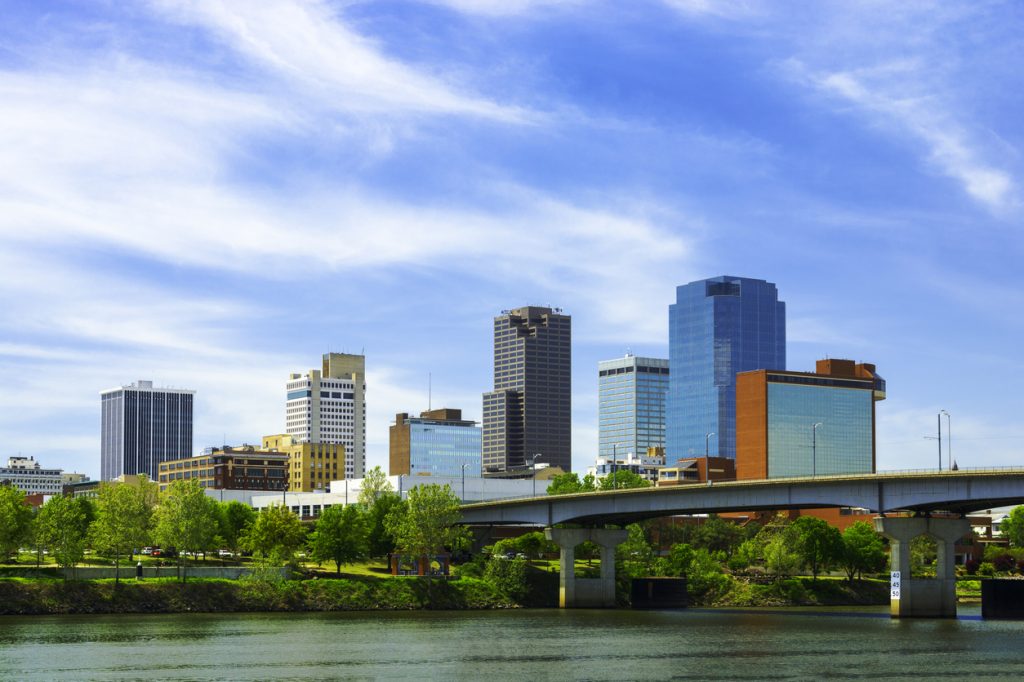
Congested interstates: 30 percent
At 35 percent, Arkansas has seen an increase in vehicle miles traveled on its interstate system since 2000 that is well above the national average (26 percent), but its percentage of highways and bridges in poor condition is average at 4 percent and 2 percent respectively.
33
Oklahoma
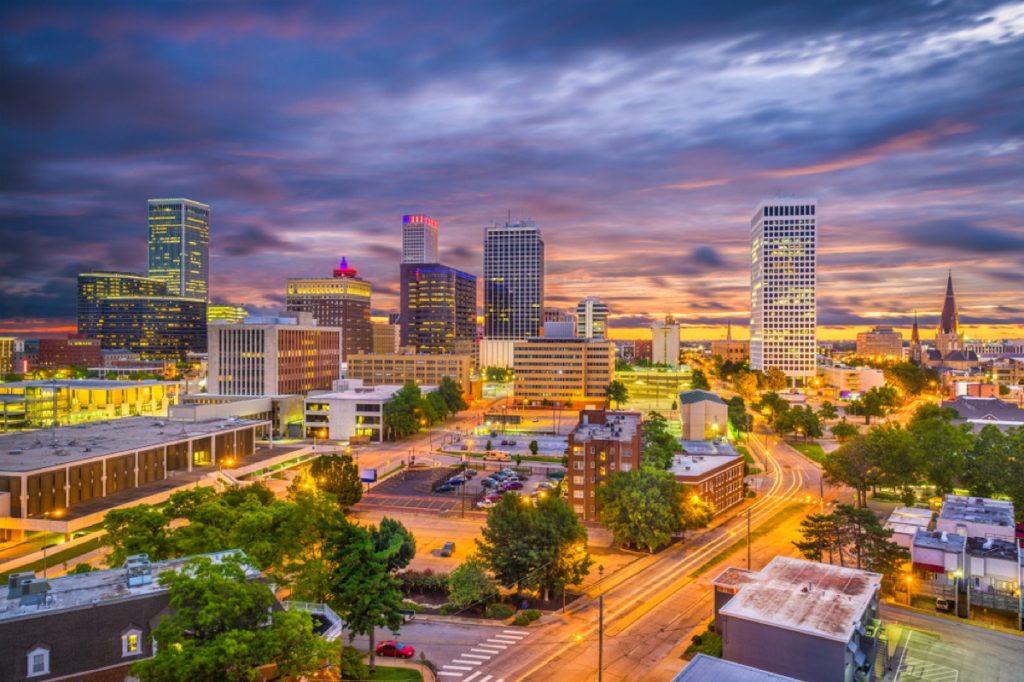
Congested interstates: 31 percent
Oklahoma has seen a 25 percent increase in vehicle miles traveled on the state’s interstate system since 2000, which is right around the national average. Yet, the state’s 31 percent traffic congestion rate on those roads remained well below the national average for that particular statistic.
32
Nebraska
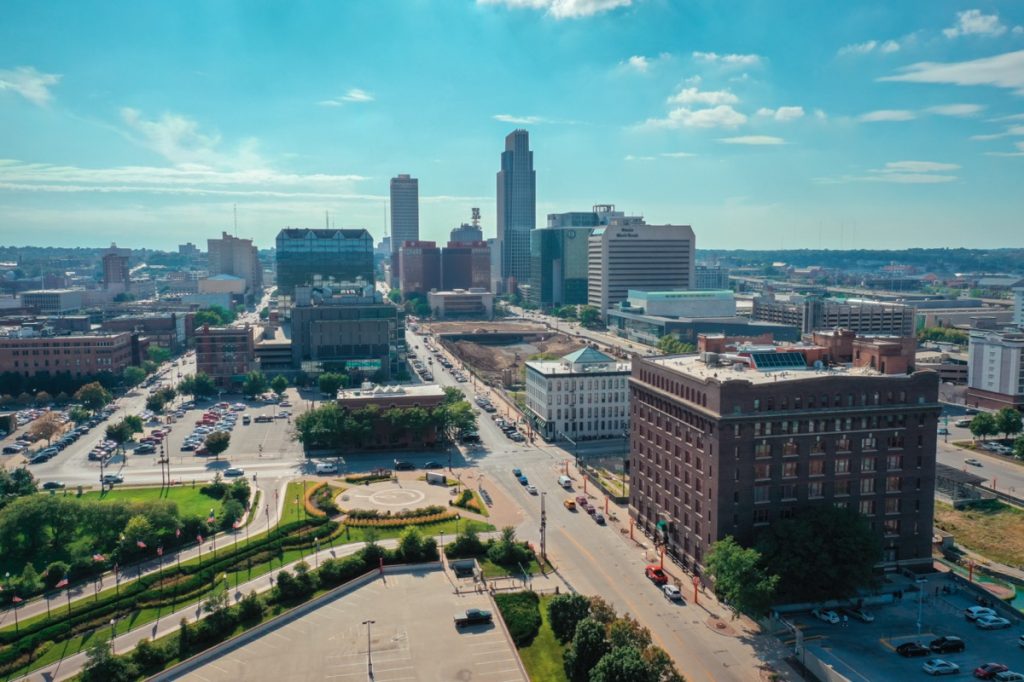
Congested interstates: 32 percent
If you’re cruising down the highways of Nebraska, there’s a one in three chance you’ll be hitting some congestion. The good news is, if you’re stuck on a bridge, you can be assured it’s pretty safe: 0 percent of Nebraska’s interstate bridges are in poor condition and only 2 percent have pavement that’s considered to be in a poor state.
31
New York
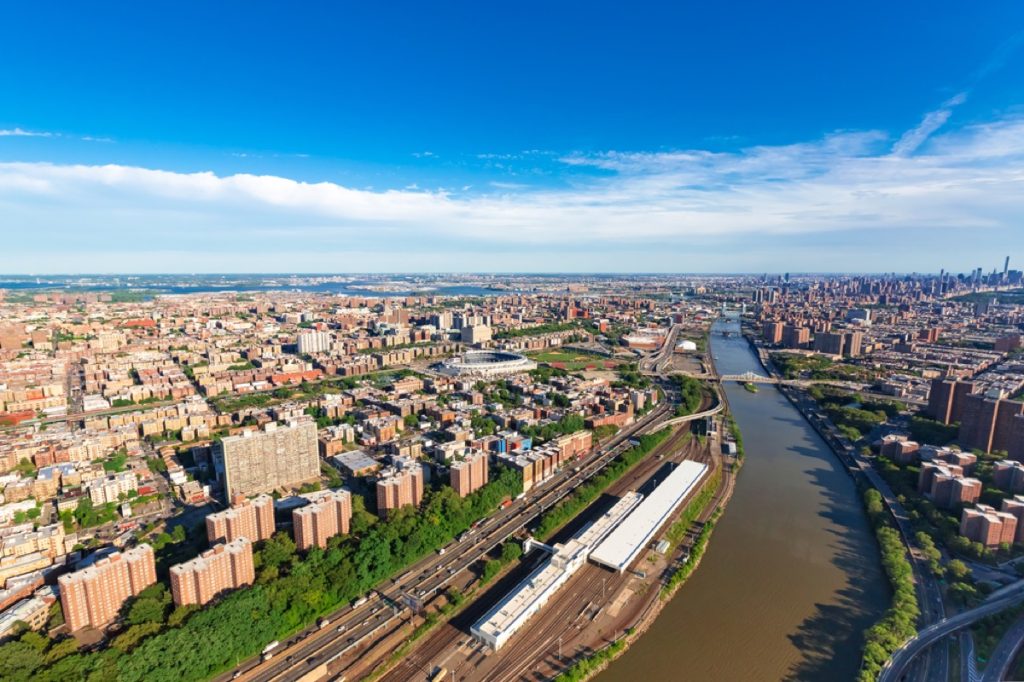
Congested interstates: 34 percent
New York has a below-average traffic congestion rate compared to all the states on this list, and it appears things may be slowing down in the Empire State. According to the TRIP report, New York has only seen an 11 percent increase in vehicle miles traveled on those roads since 2000, well below the national average of 26 percent.
30
Wisconsin
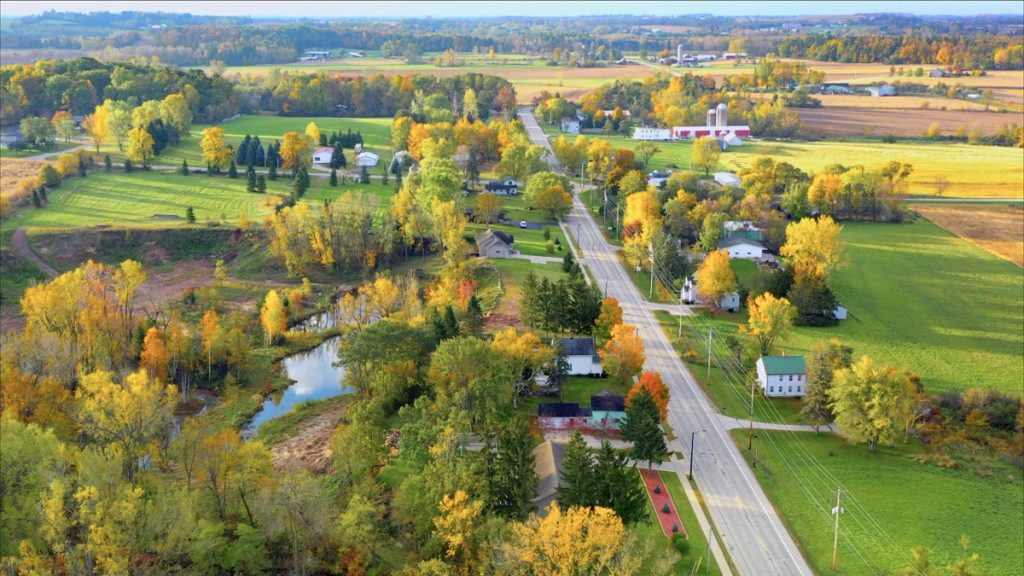
Congested interstates: 34 percent
Though its traffic congestion rate is below the national average at 34 percent, the state of Wisconsin’s highway roads and bridges is just about average, with 3 percent of the former and 2 percent of the latter in poor condition.
29
Illinois
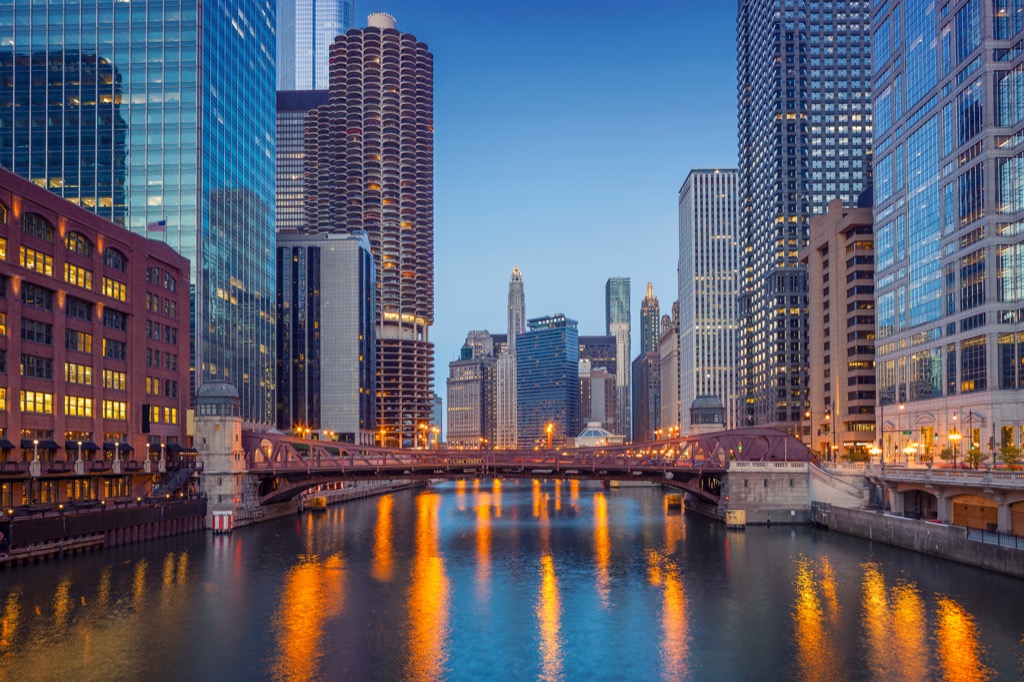
Congested interstates: 36 percent
More than a third of the highways in Illinois are considered congested and since 2000, Illinois’ interstate system has seen a 17 percent increase in vehicle miles traveled. Though that’s below the average nationwide, 4 percent of interstate pavement and 8 percent of interstate bridges are considered to be in poor condition, which are both higher than the national averages in those areas.
28
Louisiana
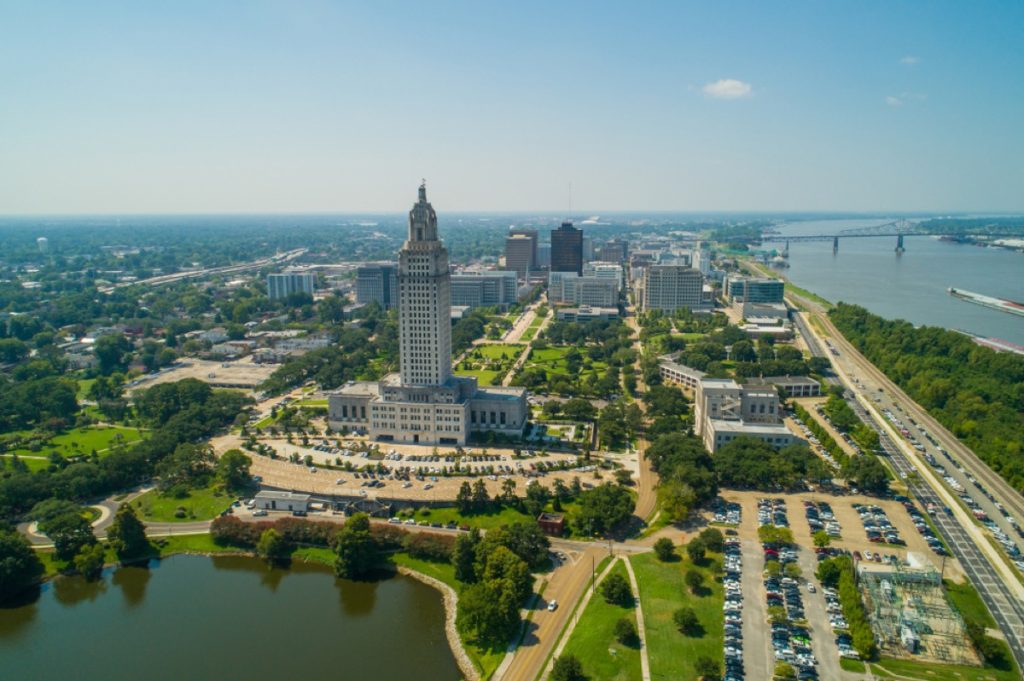
Congested interstates: 37 percent
Over the last couple decades, Louisiana has seen the second-highest increase in use of its interstate system of any state in the country. In fact, since 2000, the number of vehicle miles traveled on Louisiana’s interstates has increased by 61 percent. Still, traffic congestion remained below the national average at 37 percent.
27
Oregon
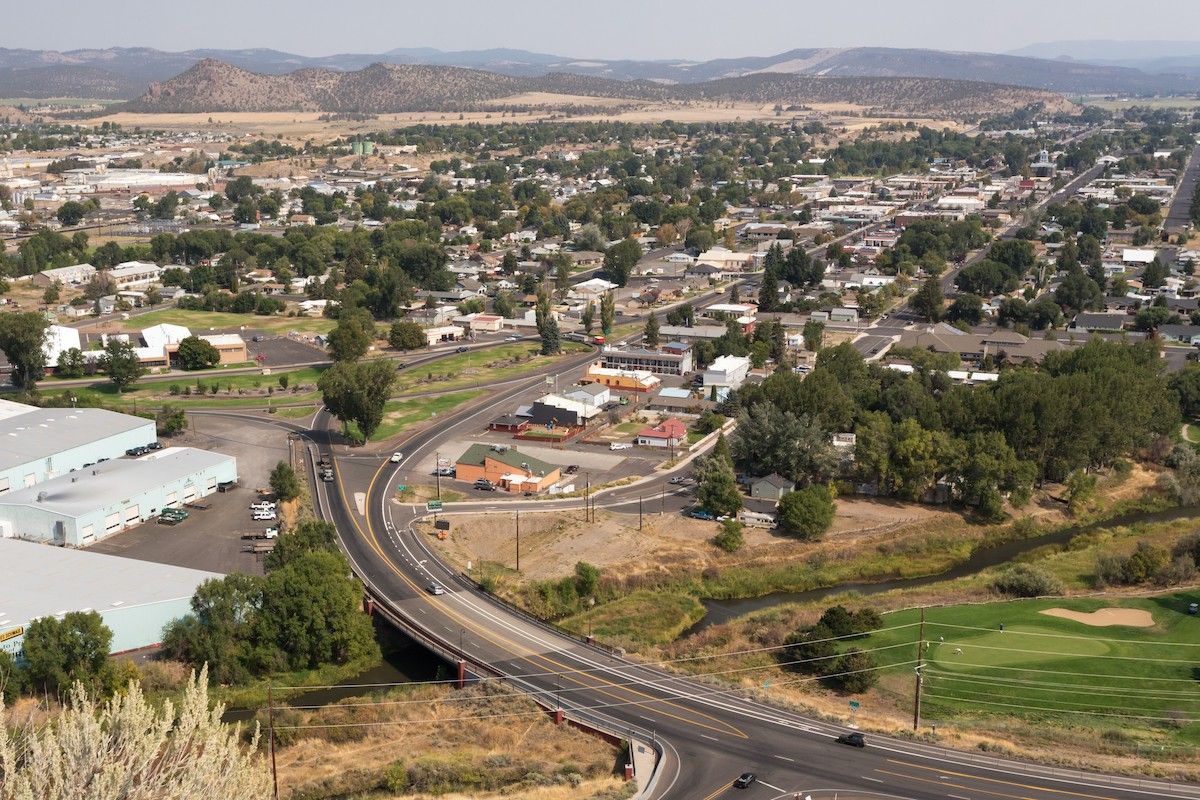
Congested interstates: 38 percent
Ohio has relatively low traffic congestion on its interstates—considering the national average of 47 percent—and the rest of its metrics are similarly below average or around there. It’s seen a 14 percent increase in vehicle miles traveled since 2000 (compared to the 26 percent national average), and only 3 percents of its highways and 1 percent of its interstate bridges are in poor condition (compared to the 3 percent average of each of those factors nationwide).
26
Michigan
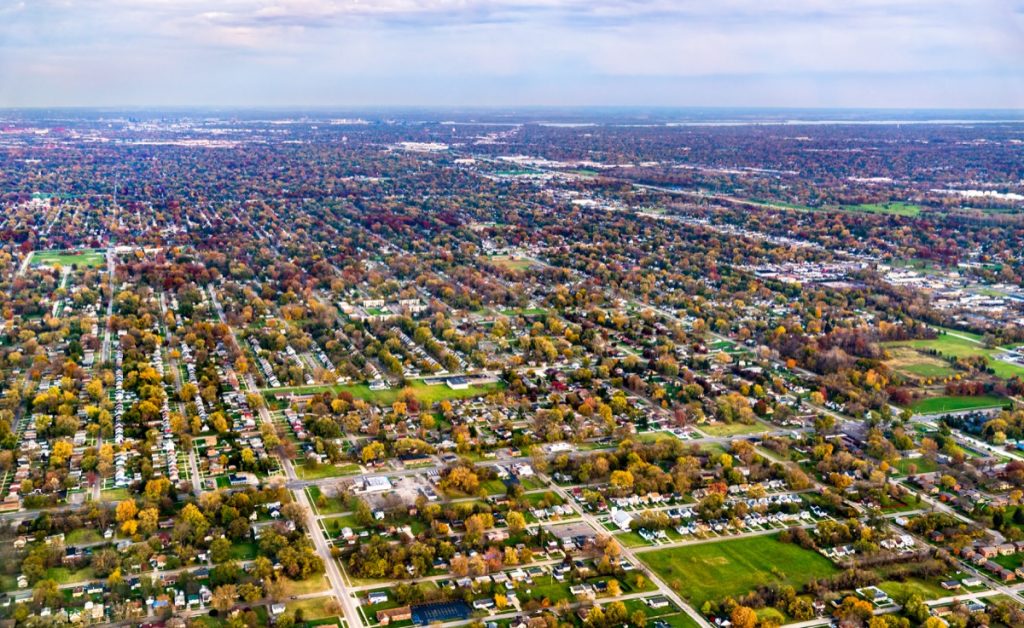
Congested interstates: 39 percent
With only an 8 percent increase in vehicle miles traveled since 2000 (one of the lowest upticks in the country), it may come as a surprise that 6 percent of the state’s interstate pavement and bridges are considered to be in poor condition, twice the national average in both those categories. Still, its percentage of congested roads is 39 percent, which is below the national average.
25
Nevada
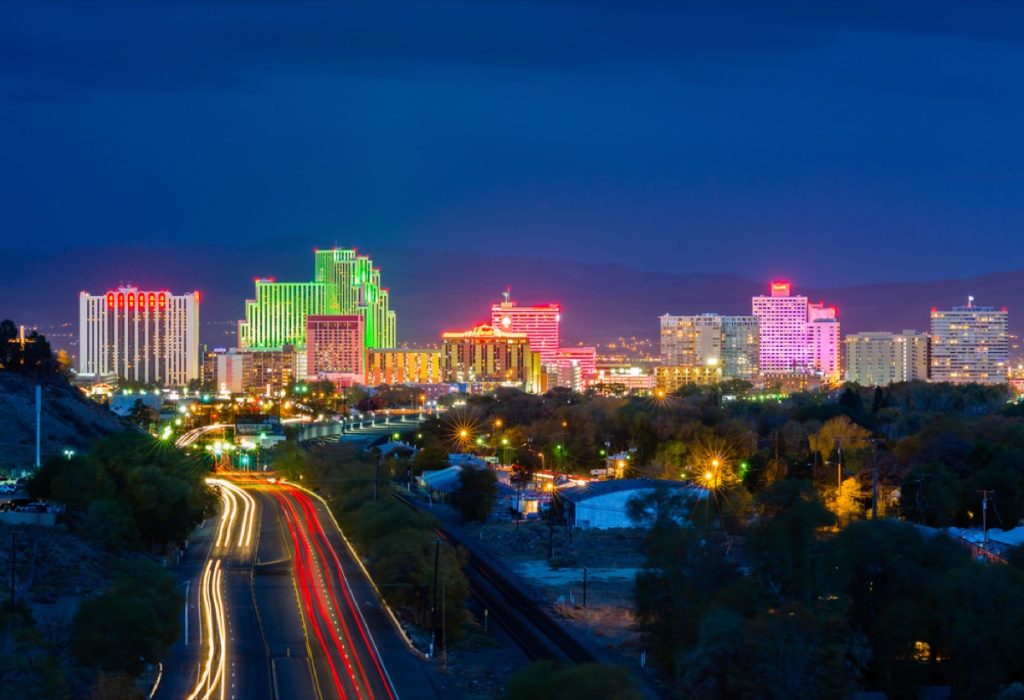
Congested interstates: 41 percent
Nevada has seen the greatest increase in use of its interstate system of any state in the past couple of decades. Since 2000, the vehicle miles traveled on those roads have increased by 69 percent. Despite the boom, its interstates remain relatively smooth sailing, with a congestion rate of 41 percent.
24
Arizona
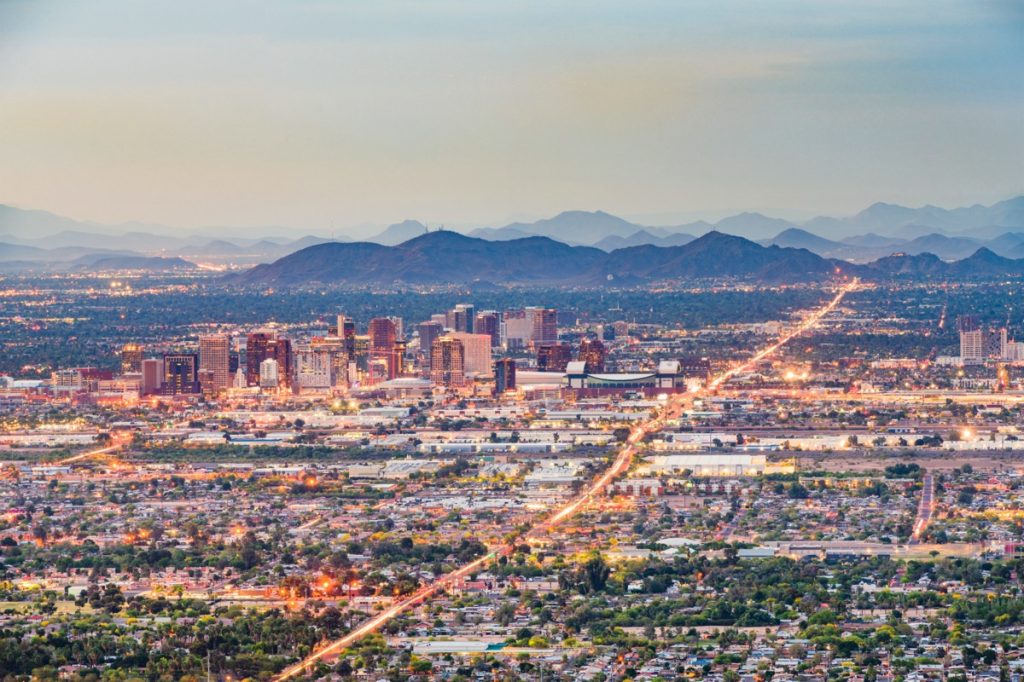
Congested interstates: 43 percent
Arizona’s interstates are just barely below average when it comes to congestion, but the conditions of highways and bridges are above average, with only 2 percent of interstates having poor pavement and 1 percent of bridges being in similarly poor condition.
23
North Carolina
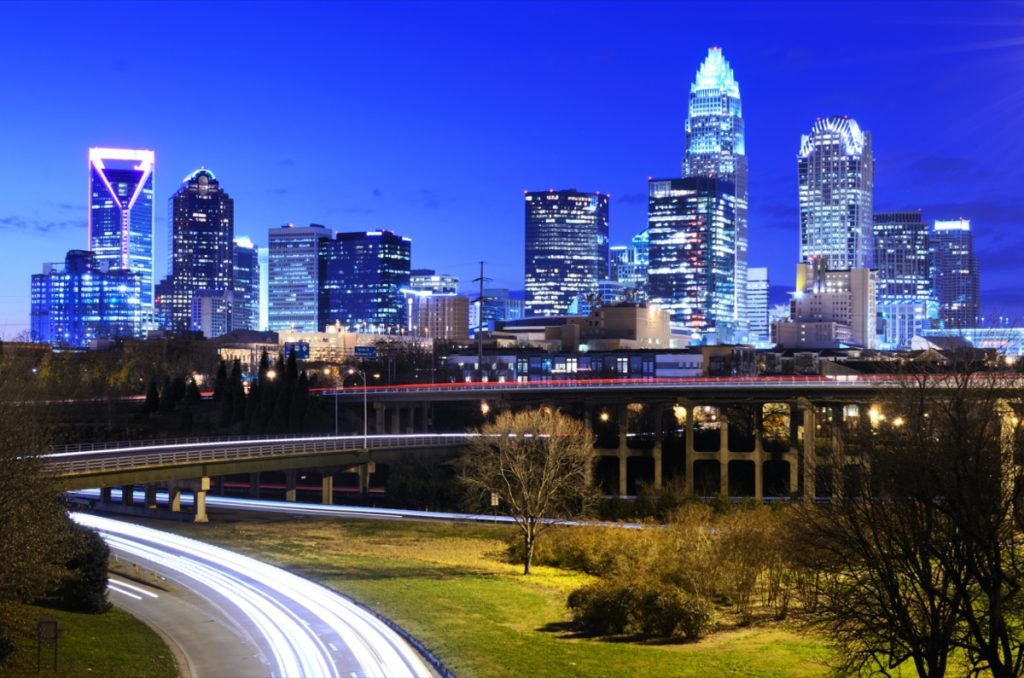
Congested interstates: 45 percent
North Carolina has seen an increase of 57 percent in vehicle miles traveled on its interstate system since 2000, more than double the national average. The level of traffic congestion on those roads, however, remained just under the national average of 47 percent, tying with the next state on this list.
22
Tennessee

Congested interstates: 45 percent
Tennessee’s interstate roads had the same level of traffic congestion as North Carolina. But it’s seen only a 33 percent increase in miles traveled by cars on its interstate system since 2000, and very few of its highways and bridges are in poor condition (1 percent and 2 percent, respectively).
21
Missouri
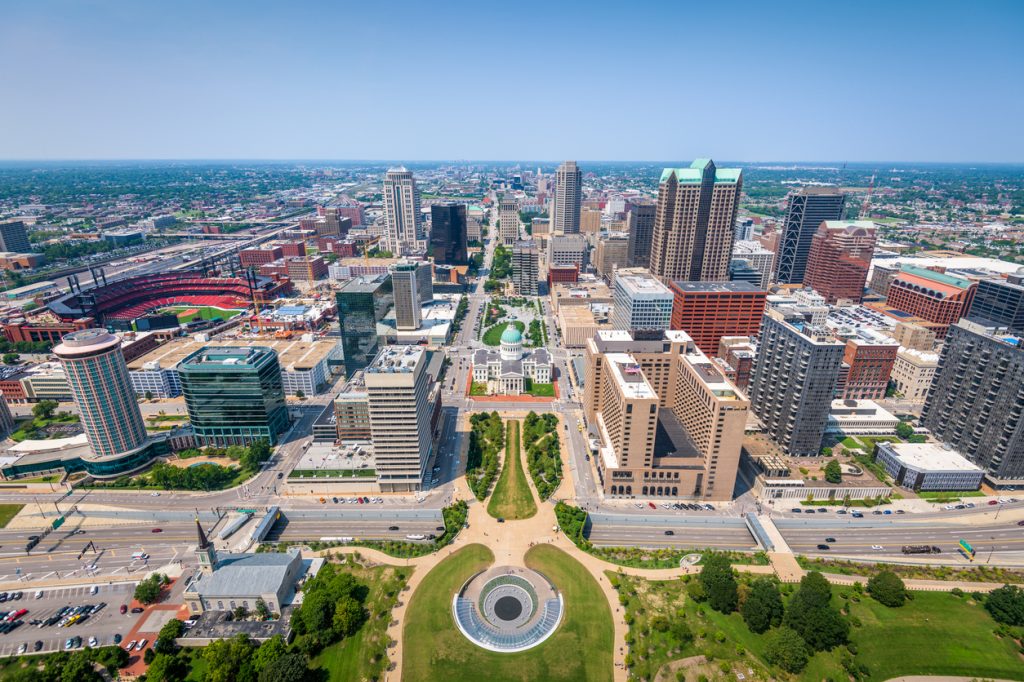
Congested interstates: 47 percent
Missouri’s traffic congestion rate is right at the national average, but where the state is struggling most is with its bridges—5 percent are in poor condition and 71 percent are considered to be fair, which are both below the national averages.
20
Ohio
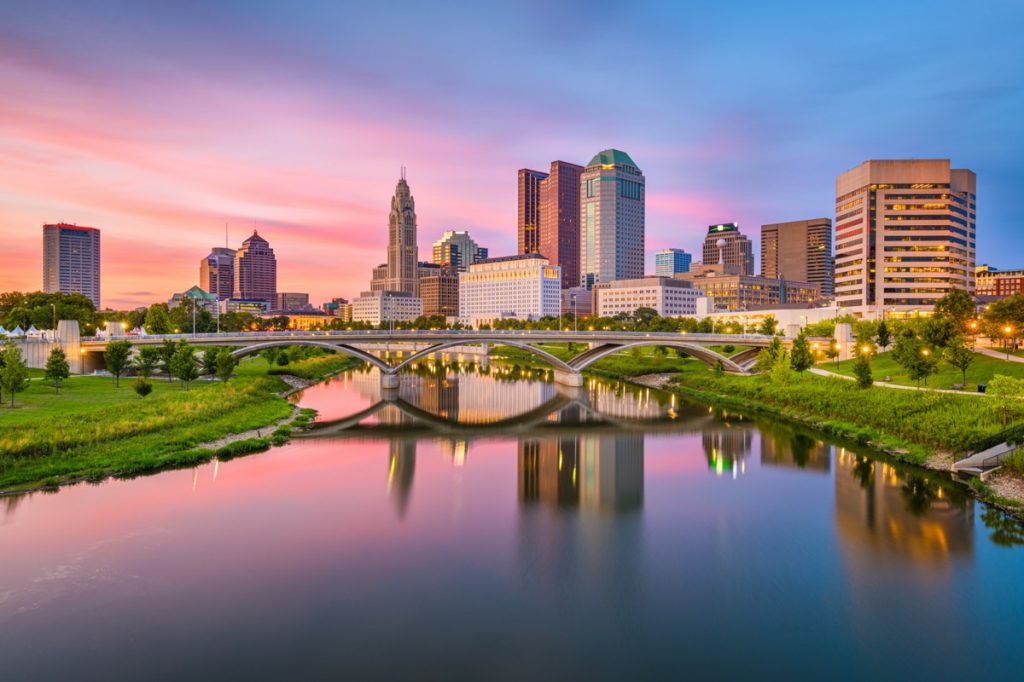
Congested interstates: 48 percent
Ohio may be the first state to exceed the national average when it comes to traffic congestion, but in all other areas, it appears to be doing fine: only 3 percent of its highways are in poor condition, and 1 percent of its bridges are considered to be in a poor state, while 33 percent are fair.
19
Utah
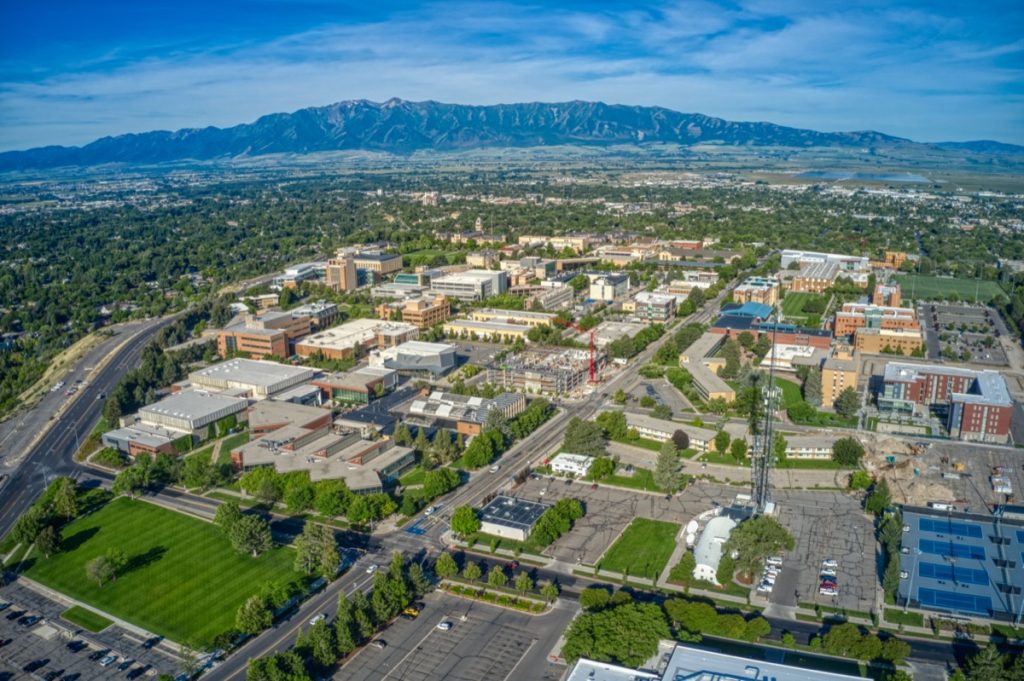
Congested interstates: 49 percent
Since 2000, Utah’s interstate system has experienced a 57 percent increase in vehicle miles traveled. But the bridges and highways don’t seem worse for the wear—only 1 percent of each are in poor condition.
18
South Carolina
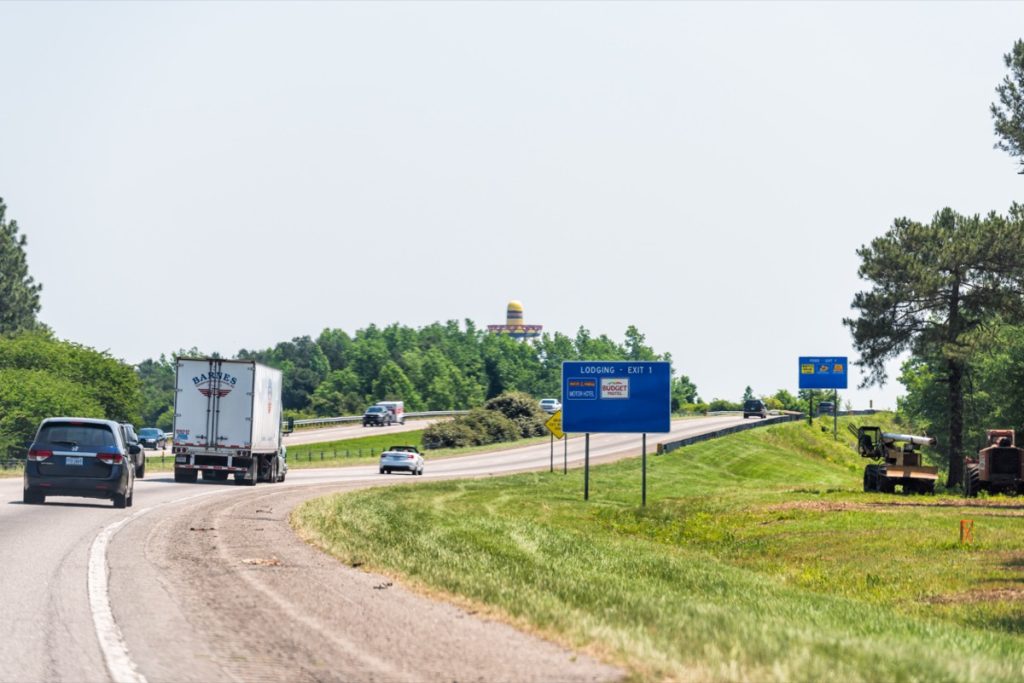
Congested interstates: 50 percent
Along with 50 percent of its interstates being congested, South Carolina’s roads and bridges are fairing slightly worse than the national average—which could be because of a 39 percent increase in vehicle miles traveled on its highways since 2000.
17
Kentucky
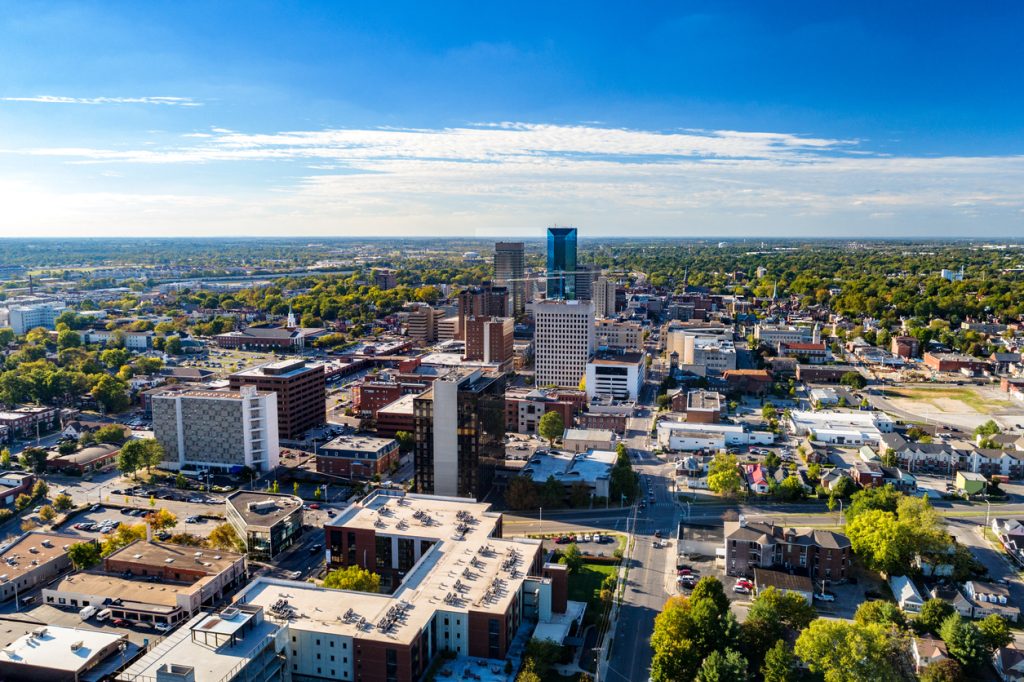
Congested interstates: 51 percent
In addition to a congestion rate that is above the national average, Kentucky’s bridges seem to be showing their age: nearly half are at least 50 years old, three-quarters are in fair condition, and 3 percent are in a poor state.
16
Virginia
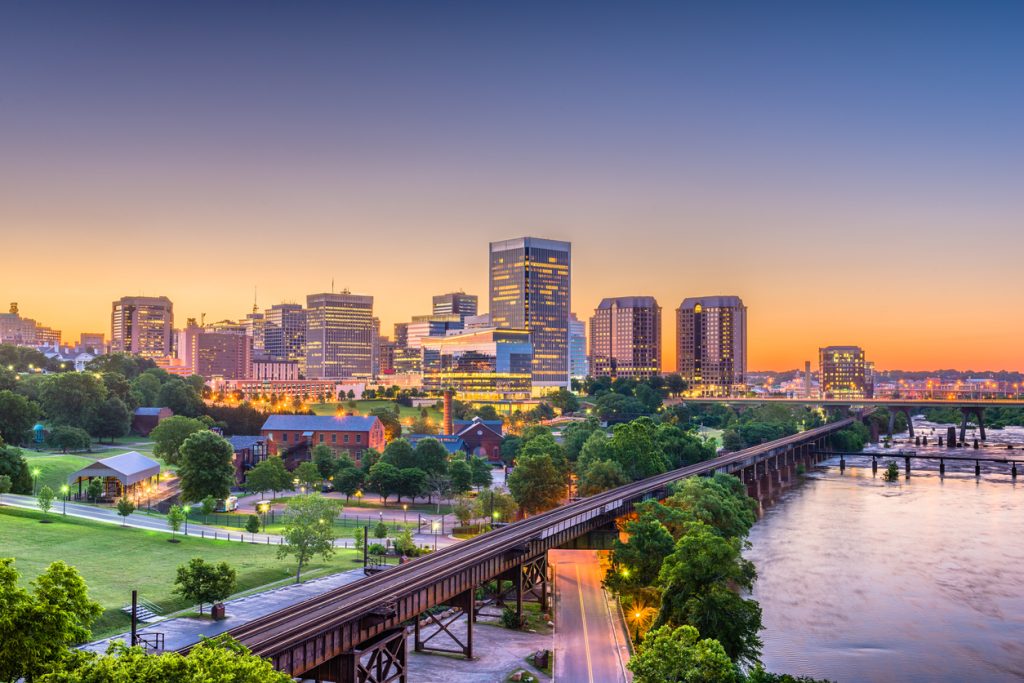
Congested interstates: 52 percent
There is nothing particularly noteworthy about the traffic situation in Virginia. While its level of congestion is slightly above the national average, the state’s percentage increase in vehicle miles traveled, percentage of interstates in poor condition, and bridges in poor condition all registered below their respective national averages.
15
New Hampshire
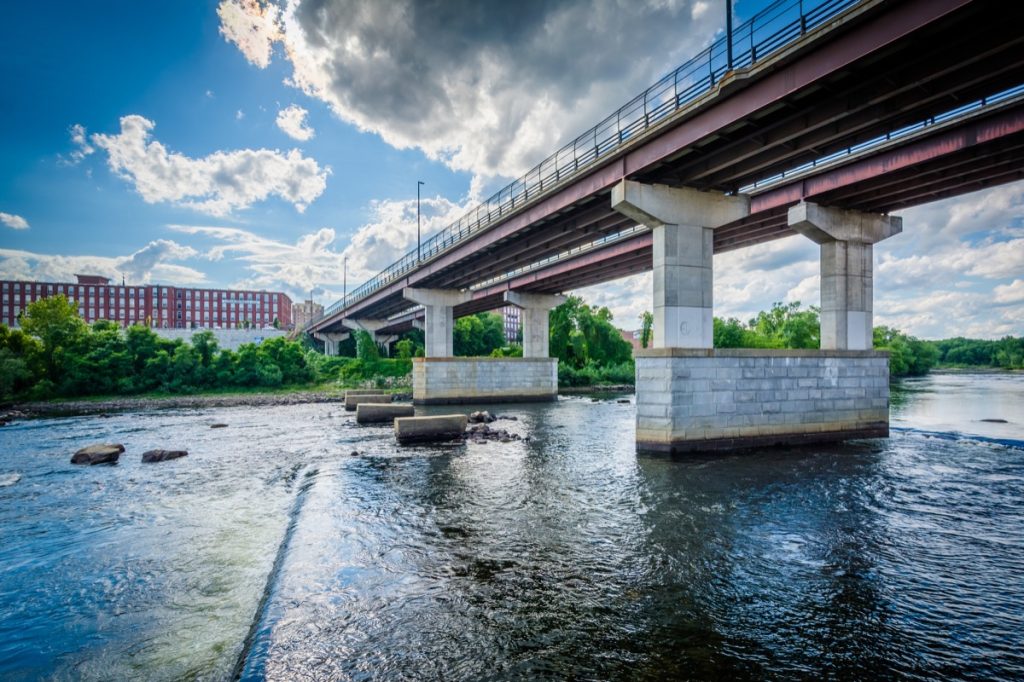
Congested interstates: 54 percent
More than half of the highways in New Hampshire are congested, but like, Virginia, the state’s interstate infrastructure is fairing OK nonetheless. Its percentage increase in vehicle miles traveled, percentage of interstates in poor condition, percentage of bridges in poor condition, and percentage of bridges in fair condition are all below the national averages in those areas.
14
Minnesota
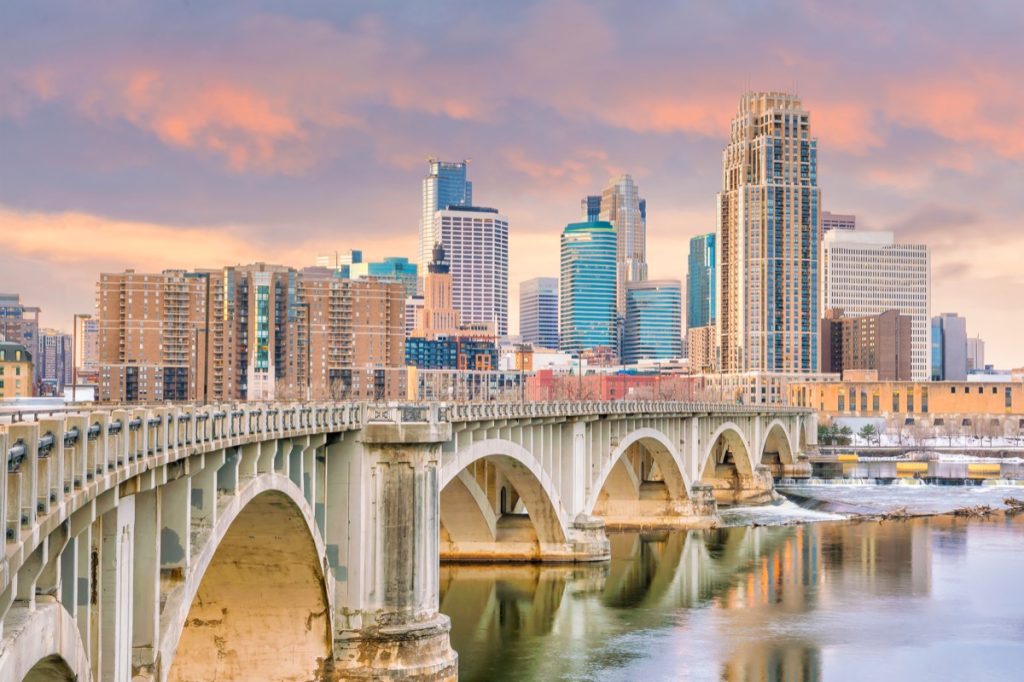
Congested interstates: 56 percent
The traffic congestion in is this Midwestern state is just above average, and so are its scores in almost all other areas: percentage of interstates in poor condition, percentage of bridges in poor condition, and percentage of bridges in fair condition. Interestingly though, it only saw a 9 percent increase in vehicle miles traveled on its interstate system since 2000.
13
Colorado
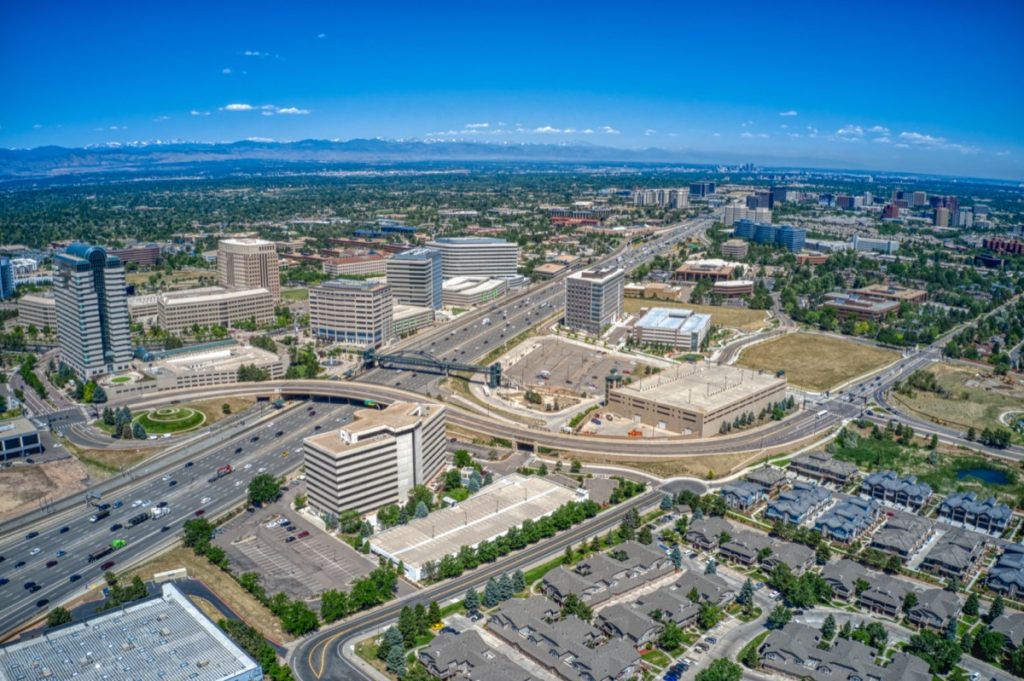
Congested interstates: 57 percent
Since 2000, Colorado’s interstate system has seen a 53 percent increase in vehicle miles traveled. This led to a traffic congestion rate of 57 percent, which is equal to that of the rate in the next state on this list.
12
Georgia
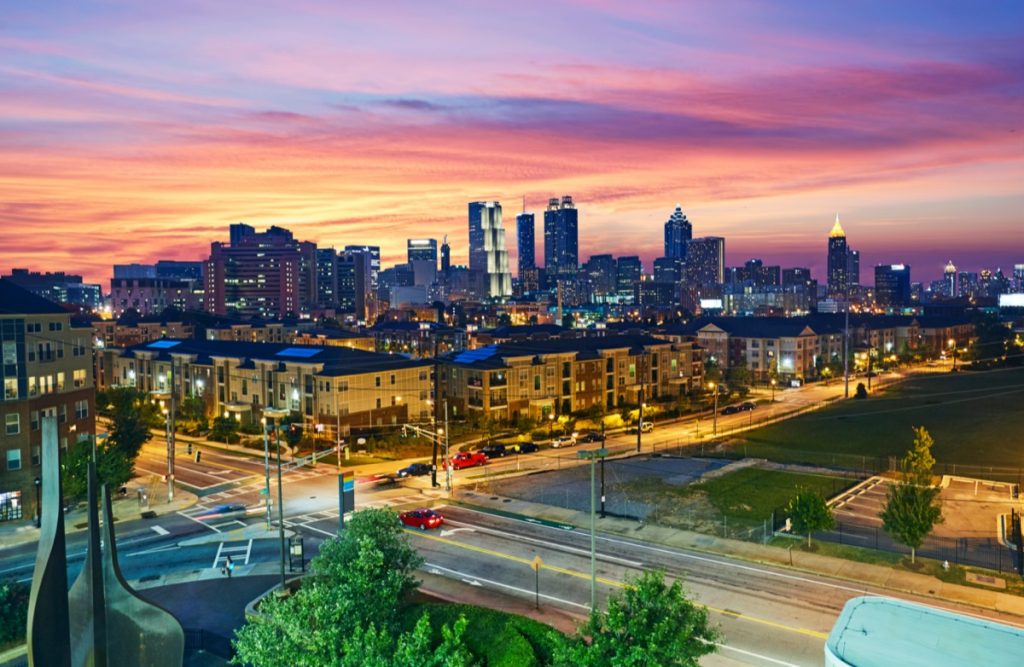
Congested interstates: 57 percent
Like Colorado, 57 percent of Georgia’s interstate system is considered to be congested. Interestingly enough, Georgia experienced less than half the increase in vehicle miles traveled on those roads since 2000 as Colorado did, with just 22 percent.
11
Texas
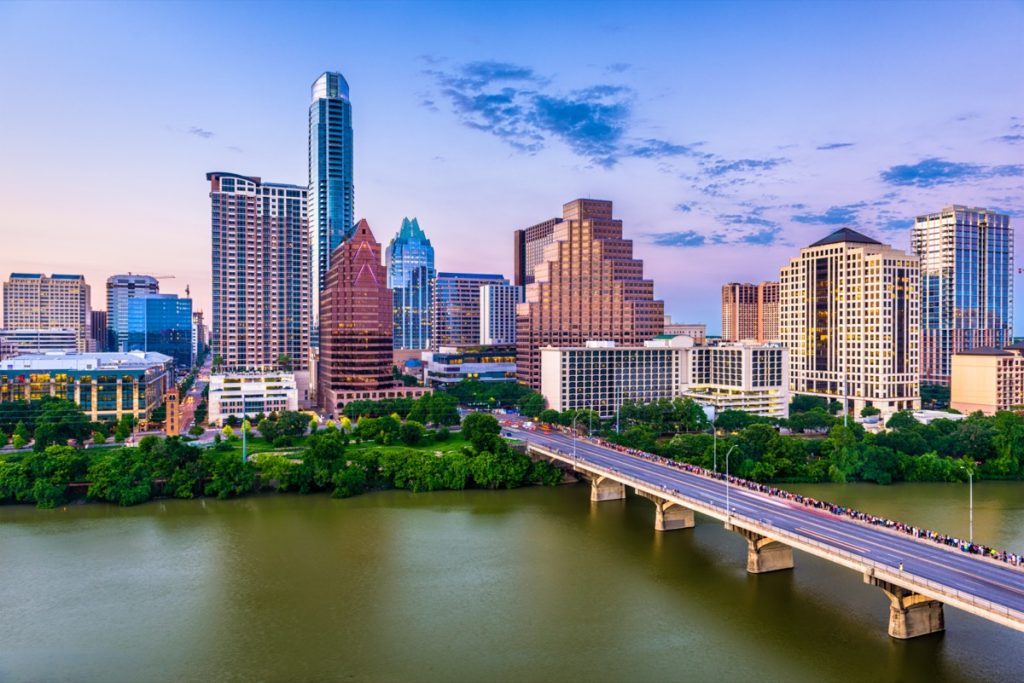
Congested interstates: 58 percent
Despite an increase in vehicle miles traveled of 49 percent since 2000, only 2 percent of the pavement that makes up the Lone Star State’s interstates is considered to be in poor condition, and only 1 percent of its bridges have the same distinction.
RELATED: This Is the Deadliest Car in the U.S., According to Data.
10
Washington

Congested interstates: 58 percent
Like Texas, Washington has a traffic congestion rate of 58 percent on its interstates, but the state did see a smaller increase in vehicle miles traveled in the past 20 years—just 17 percent.
9
Hawaii
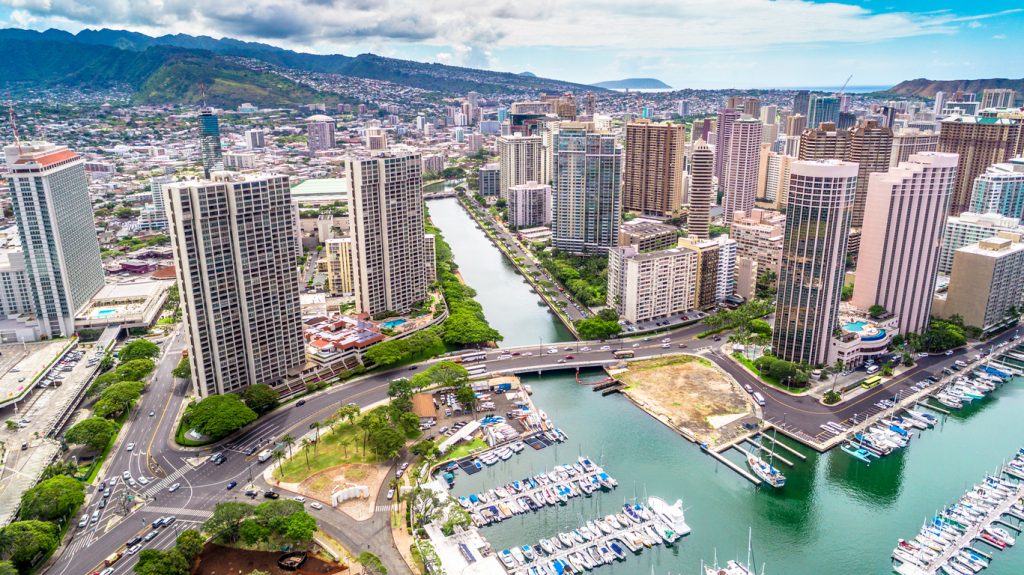
Congested interstates: 60 percent
Hawaii’s interstate roads are in the worst condition of any state in the country. In fact, 23 percent of the pavement that makes up those highways is considered to be in poor condition, which is much higher than the national average of 3 percent.
8
Connecticut
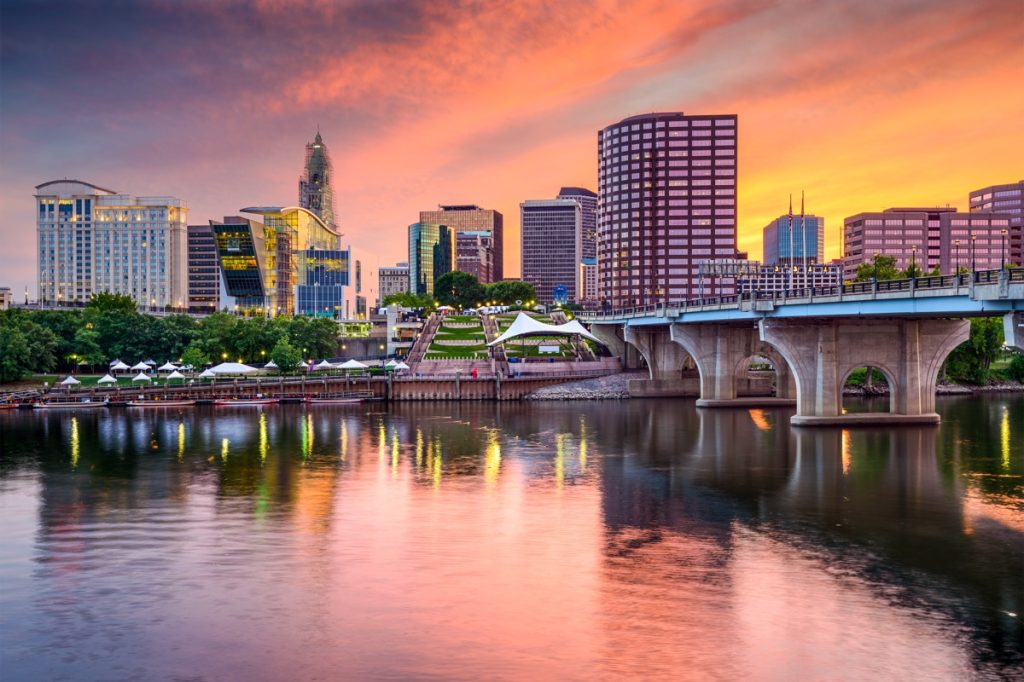
Congested interstates: 63 percent
Despite a 63 percent congestion rate, Connecticut’s interstate roads have seen a pretty consistent amount of use over the last couple of decades. Since 2000, there has only been a 3 percent increase in vehicle miles traveled on the roads and its highways and bridges are holding steady with just 1 percent of the former and 3 percent of the latter being in poor condition.
7
Rhode Island
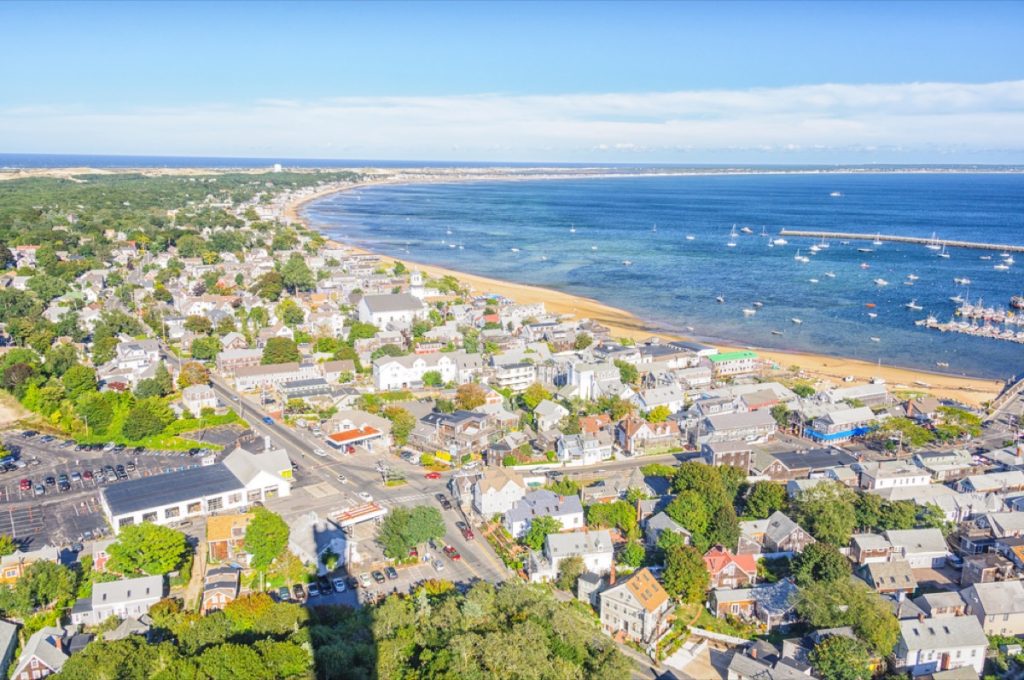
Congested interstates: 65 percent
Rhode Island is the only state on this list that saw vehicles miles traveled on its interstates actually decrease since 2000. And while it was only a 1 percent drop, it’s probably a good thing for the state, seeing as the traffic congestion rate on its interstates is already the seventh highest in the country.
6
Massachusetts
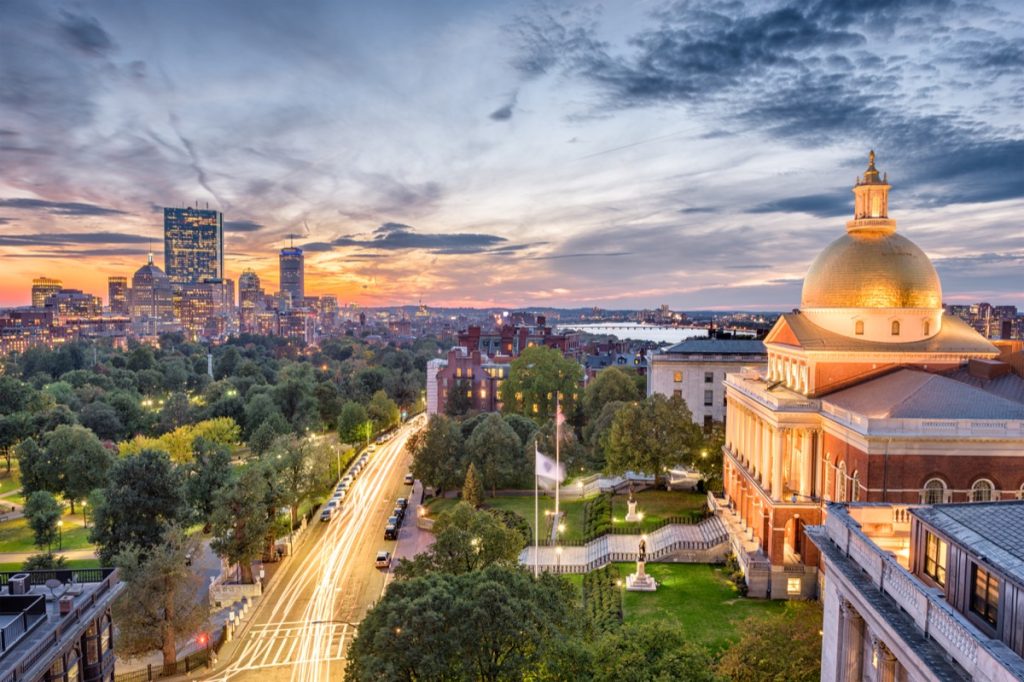
Congested interstates: 68 percent
Massachusetts is another Northeastern state to crack the top 10 worst states when it comes to highway traffic. The condition of the pavement on these roads is right at the national average of 3 percent, but the same can’t be said for its bridges: 7 percent are in poor condition (compared to the 3 percent national average) and 78 percent are fair (more than 20 percentage points above the 57 percent national average).
5
Florida
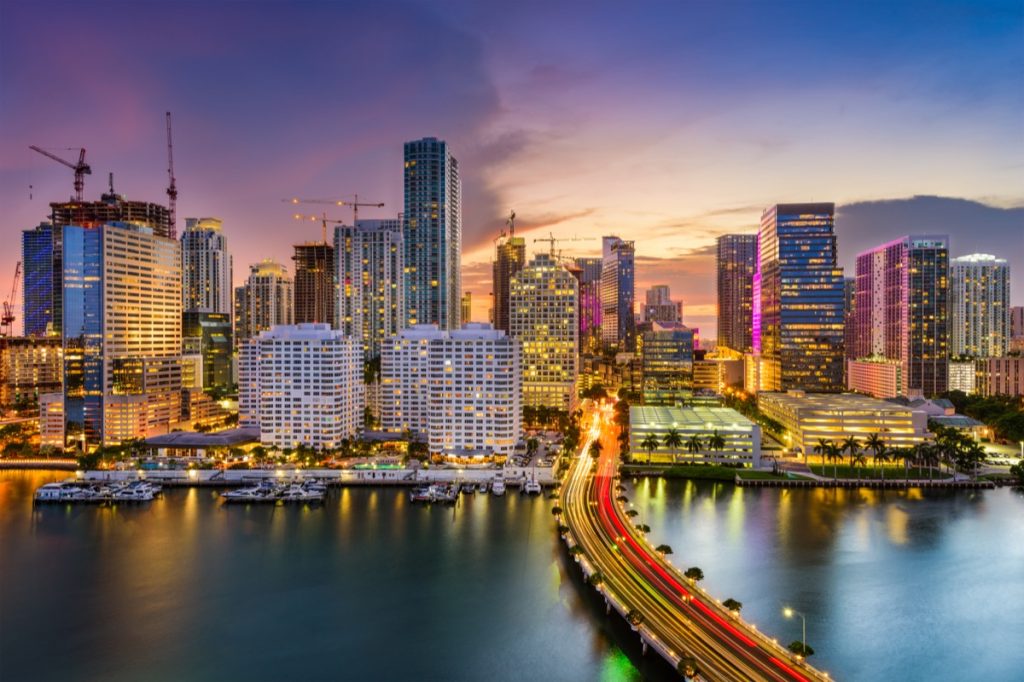
Congested interstates: 70 percent
Florida has seen a 41 percent increase in vehicle miles traveled on its interstates since 2000, which is likely why nearly three-quarters of its interstates are congested. Still, only 2 percent of the pavement and 0 percent of the bridges that make up the interstate system are considered to be in poor condition.
For more state statistics and rankings sent straight to your inbox, sign up for our daily newsletter.
4
Delaware
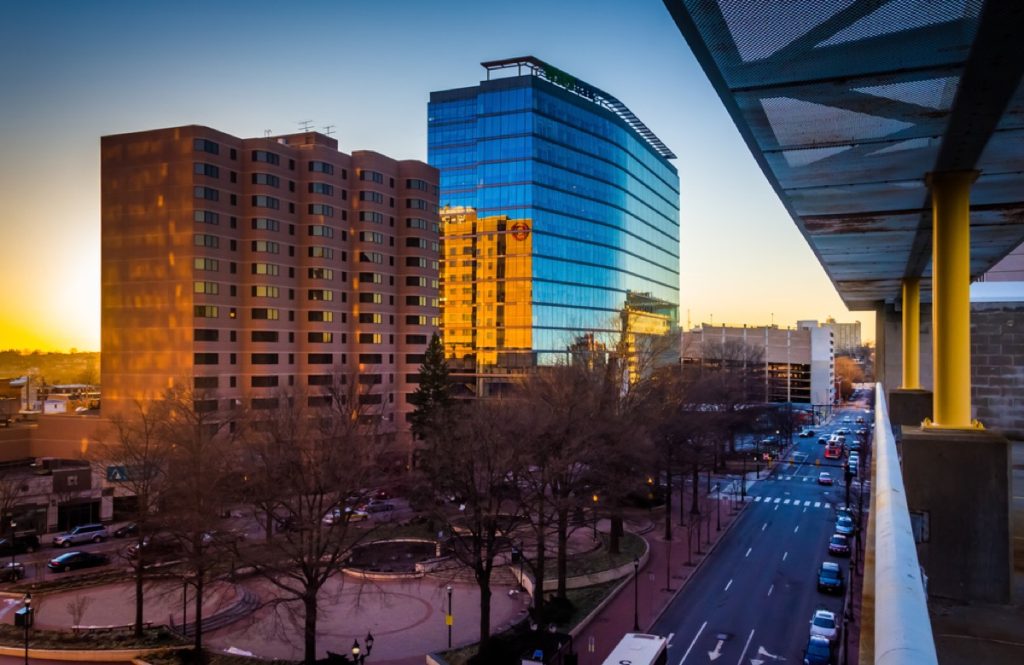
Congested interstates: 71 percent
Not only does Delaware have a high traffic congestion rate at 71 percent, but its pavement isn’t holding up to the challenge, it seems: 9 percent of highways are in poor condition, three times that of the national average.
3
New Jersey
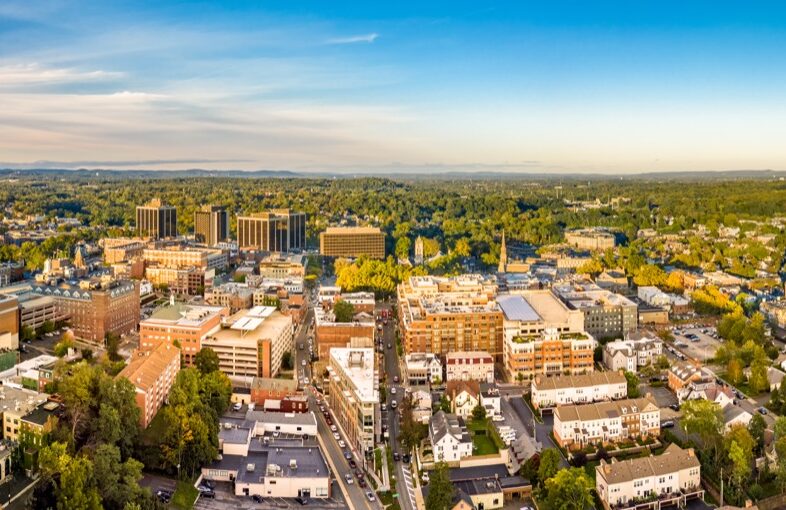
Congested interstates: 81 percent
New Jersey has the third worst interstate traffic in the country, and, like Delaware, its roads are showing the pressure: 9 percent of highways have pavement that’s in poor condition in the Garden State.
2
Maryland
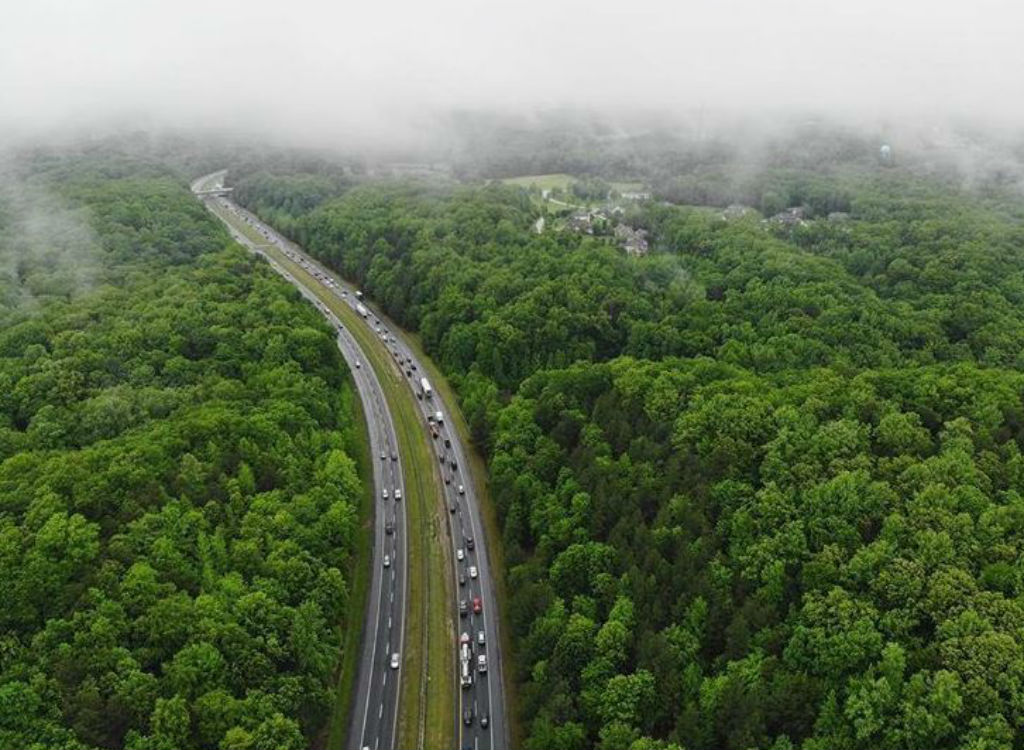
Congested interstates: 83 percent
Maryland has seen a relatively modest 19 percent increase in vehicle miles traveled on its interstates since 2000, which is probably a good thing since the traffic on those roads is the second worst in the country. Not to mention, 5 percent of the pavement that makes up Maryland’s interstates is in poor condition.
1
California
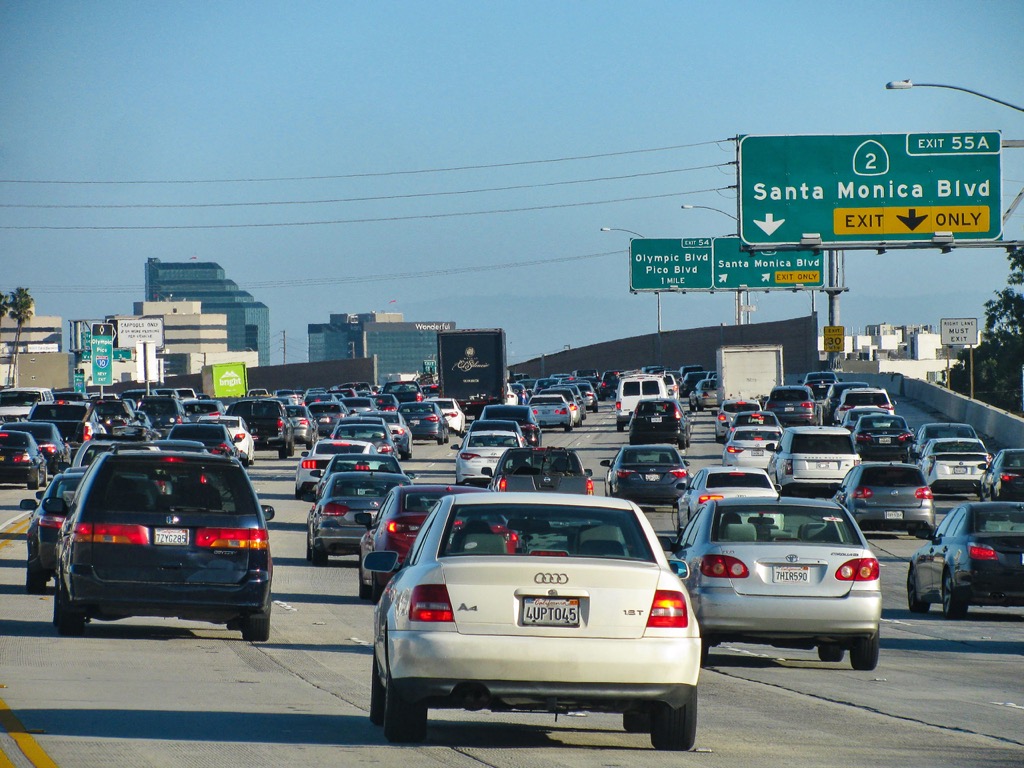
Congested interstates: 87 percent
Perhaps it is no surprise that California has the worst traffic in the entire country—the Golden State’s traffic so legendary, Saturday Night Live had an entire sketch series about navigating the congested highways.
Based on the TRIP report, California’s roads are looking slightly worse than Maryland’s, too: with 6 percent having pavement in poor condition.
RELATED: This Is the Deadliest Road in America, According to Data.